Allison Photo Collection
February, 1941- March, 1941
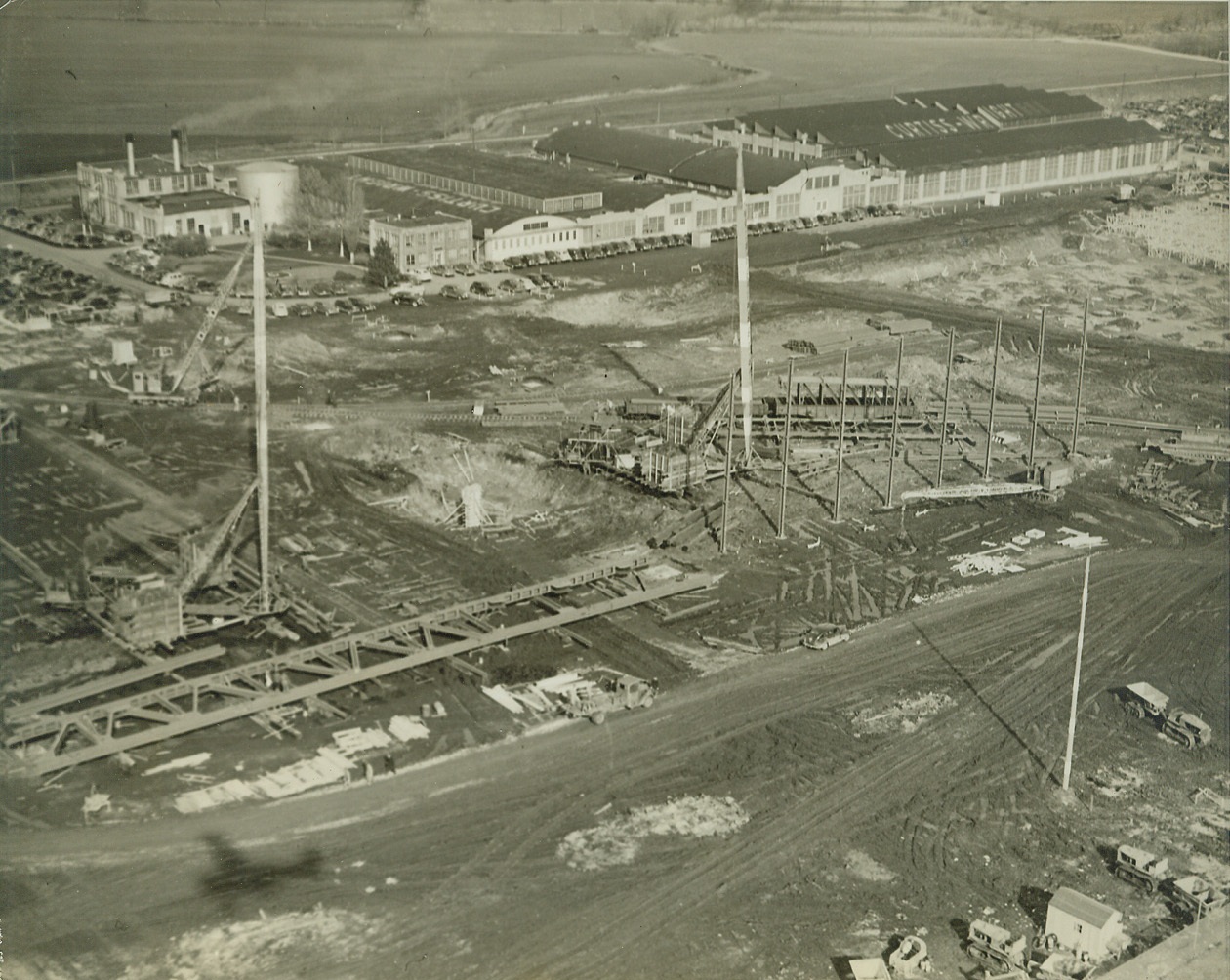
Curtiss-Wright Expand St. Louis Plant, 2/1/41 ST. LOUIS, MO. – Aerial view of construction work on the new Curtiss-Wright plant near Lambert-St. Louis airport. In the background is the present plant, not nearly large enough now to put out the material expected from it on the national defense program. Your credit: must read “ACME”;
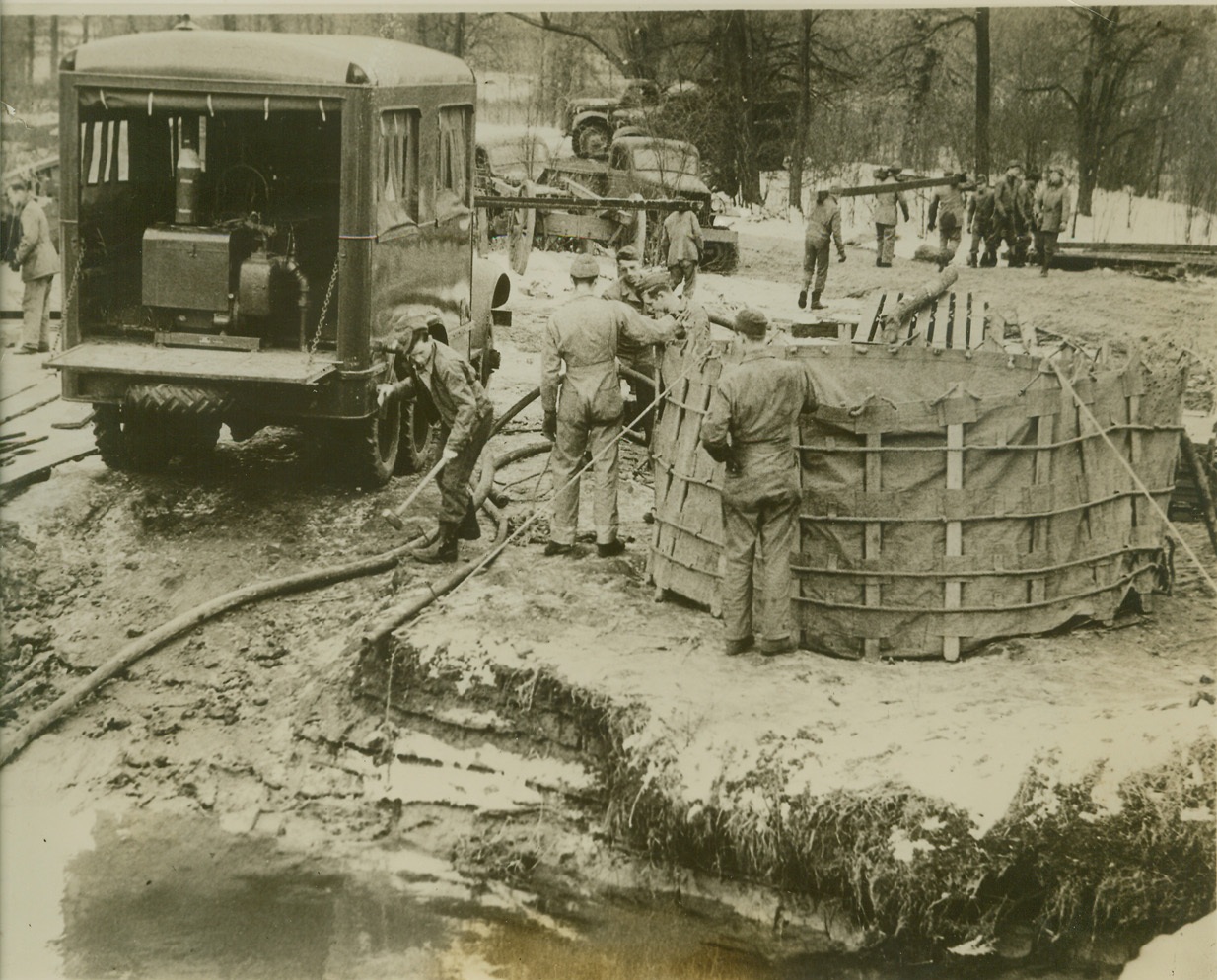
NEW MOBILE WATER PLANT, 2/1/41 FORT CUSTER, MICHIGAN- The Army is proud of this machine, a mobile water plant that pumps, purifies and delivers 150,000 gallons of water every twenty-four hours. Each unit carries four canvas 5,000-gallon tanks, one of which is shown at right of truck, and can start delivering at full capacity 30 minutes after reaching water source. Army engineers are pictured testing the machine at Fort Custer, Michigan. Credit: OWI Radiophoto from ACME;
![CREW OF SCUTTLED GERMAN LINER INTERNED, 2/1/41 EL PASO, TEX. – Members of the crew of the scuttled German liner Columbus peek from windows of their closely guarded railroad car while enroute for Fort [illegible], in southern New Mexico, where they will be interned for the duration of the European war. Credit: ACME;](/media/7964/2-1-41-1107.jpg)
CREW OF SCUTTLED GERMAN LINER INTERNED, 2/1/41 EL PASO, TEX. – Members of the crew of the scuttled German liner Columbus peek from windows of their closely guarded railroad car while enroute for Fort [illegible], in southern New Mexico, where they will be interned for the duration of the European war. Credit: ACME;
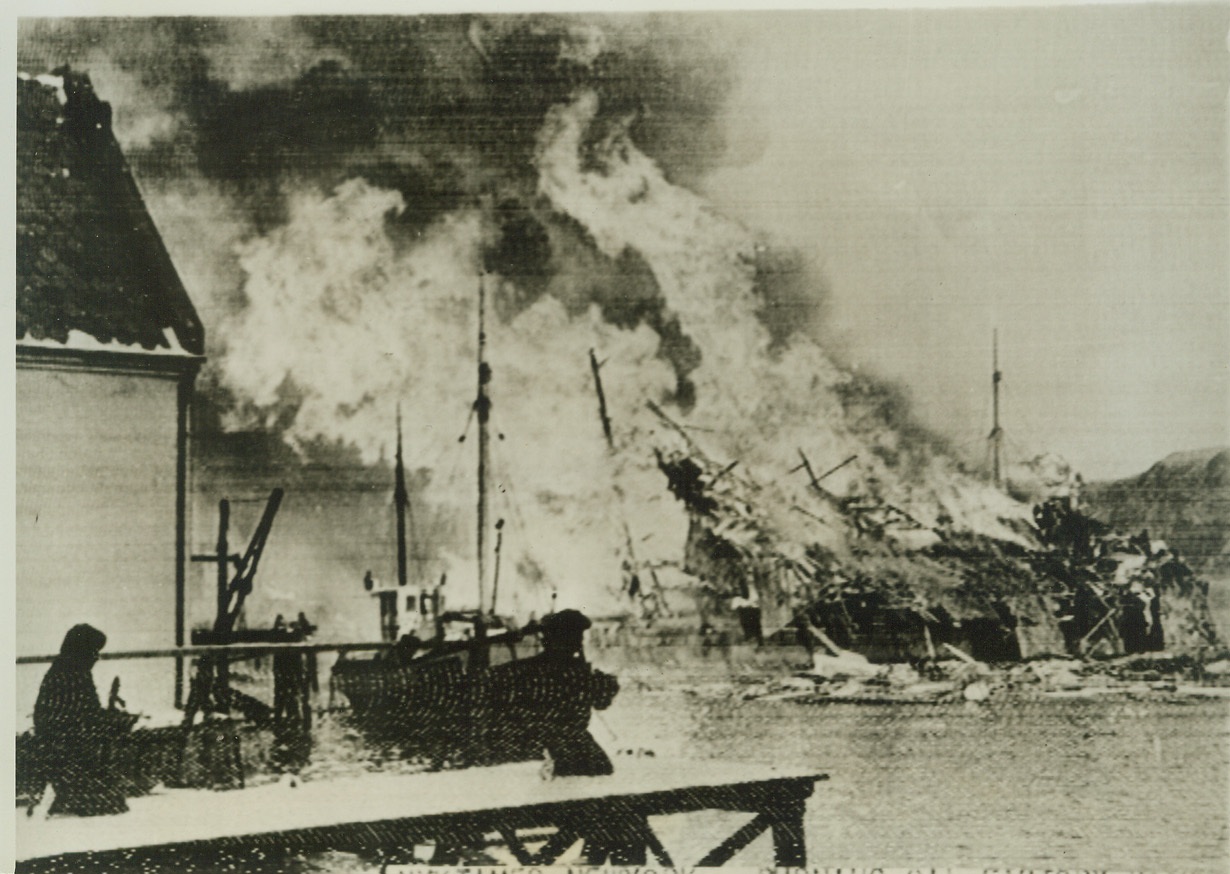
Flames and smoke, 2/1/41 LONDON -- Flames and smoke shoot skyward from an oil factory set afire by British soldiers who invaded Vaagso in German-occupied Norway on December 27. In the foreground the British hold a jetty against snipers. British sources stated that Commandos took part in the raid. Credit: (ACME Cablephoto);
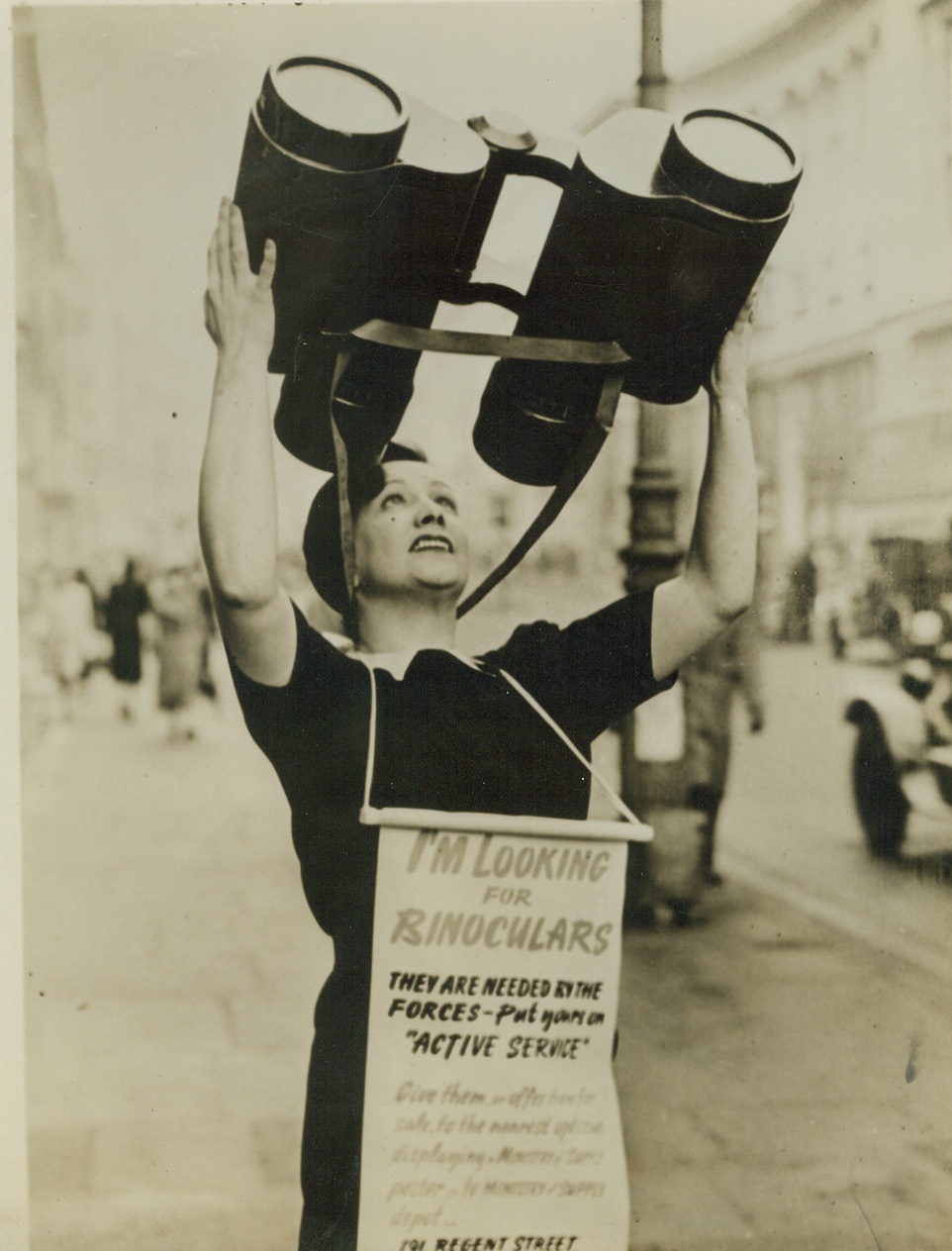
Attractive, 2/5/41 London – Attention compelling is this pretty young lady and her oversized “binoculars” as she parades through Regent Street, keeping a sharp lookout for anyone answering her appeal for binoculars for use by the fighting forces. Credit: (ACME);
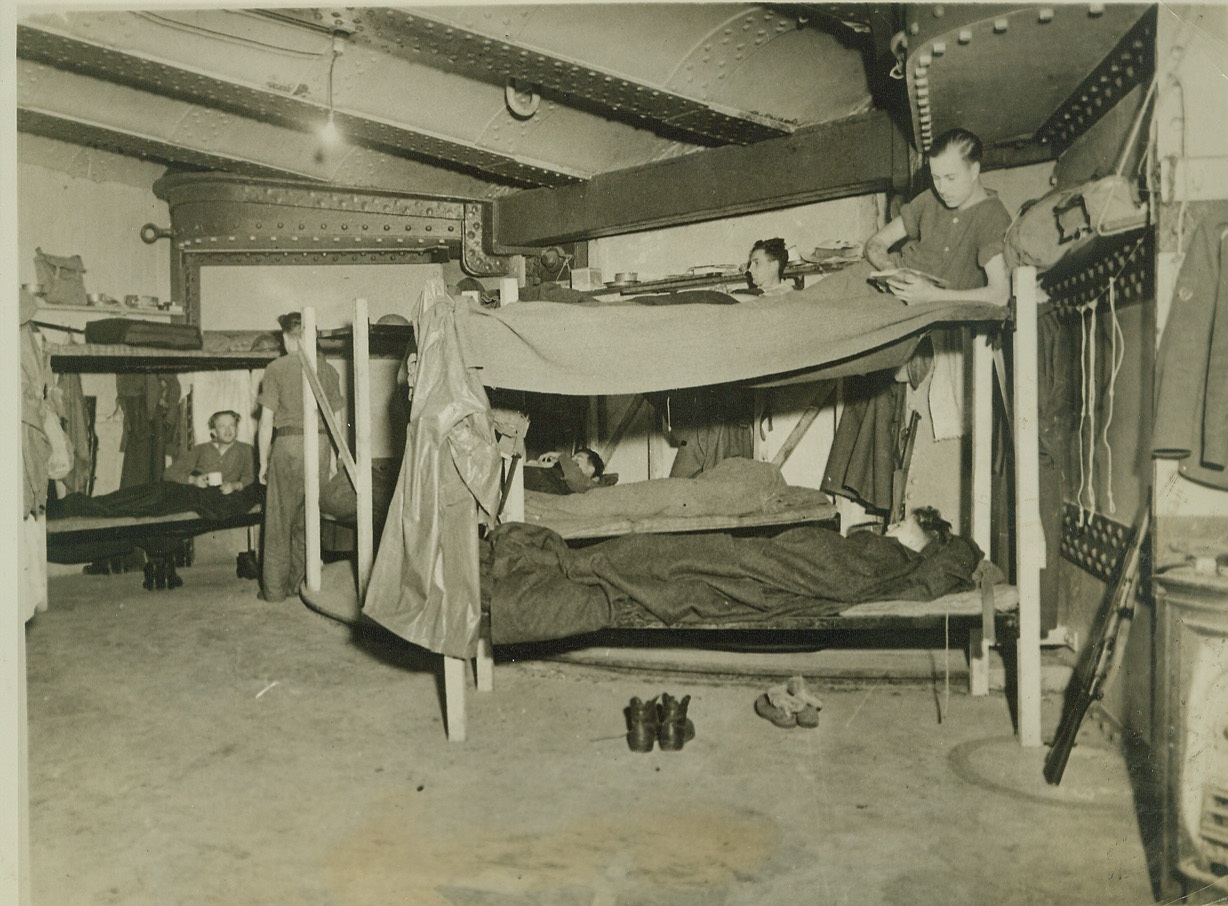
Life in a British Sea Fort, 2/5/41 ENGLAND -- Men off duty in a sea fort of the Southern Command rest in their bunks in the fort's living quarters. These sea forts, huge structures of steel and concrete which bristle with guns, are anchored off shore and are jointly manned by Army and Navy personnel. Credit: (ACME);
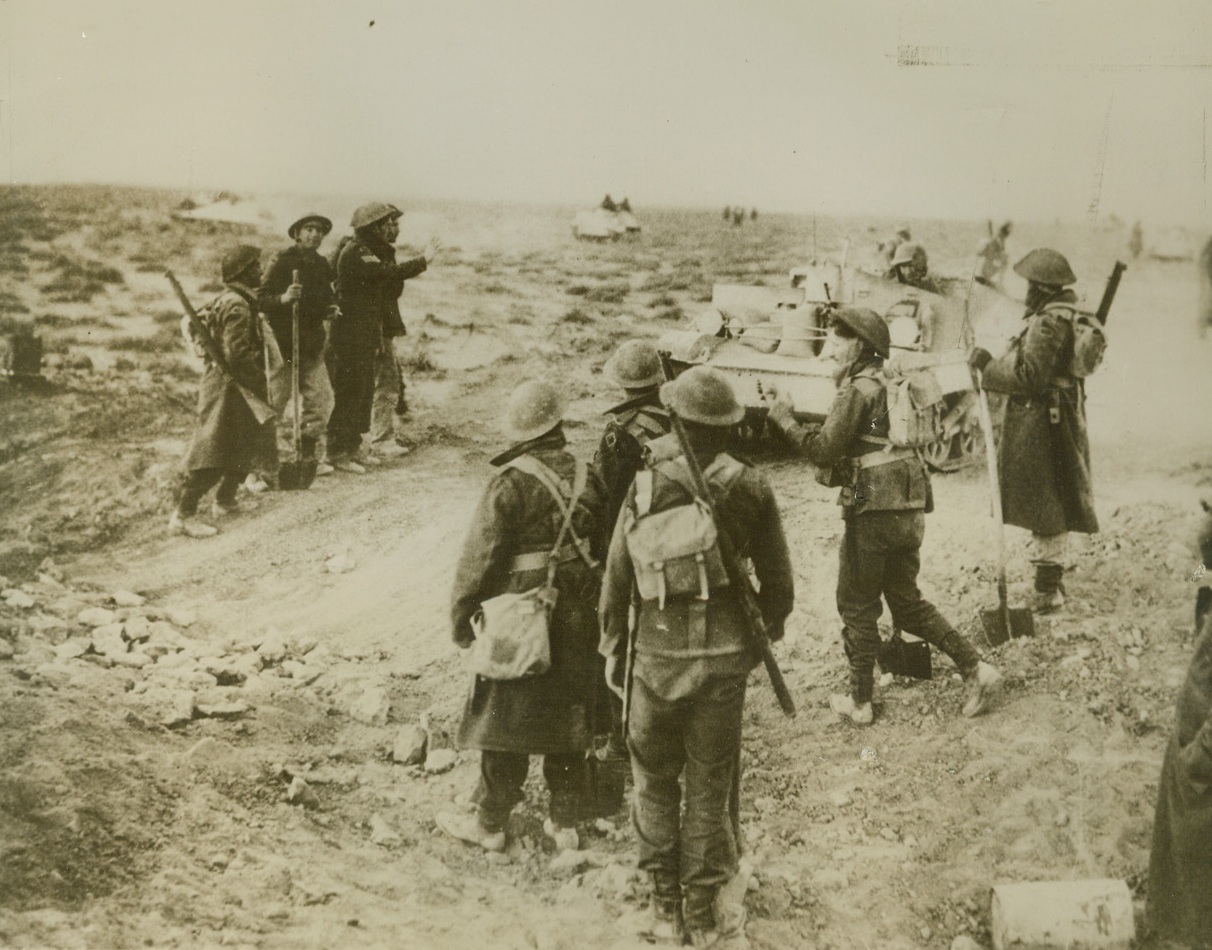
Skipping Over an Anti-Tank Ditch, 2/5/41 Bardia, Libya – Sappers with the British army attacking Bardia, fortified Italian Libyan seaport, watch tanks and bren gun carriers crossing an anti-tank ditch which they have bridged with earth and stones. Driving on in to Bardia, the British claim capture of 38,000 Italian soldiers, including four generals. Credit line (ACME);
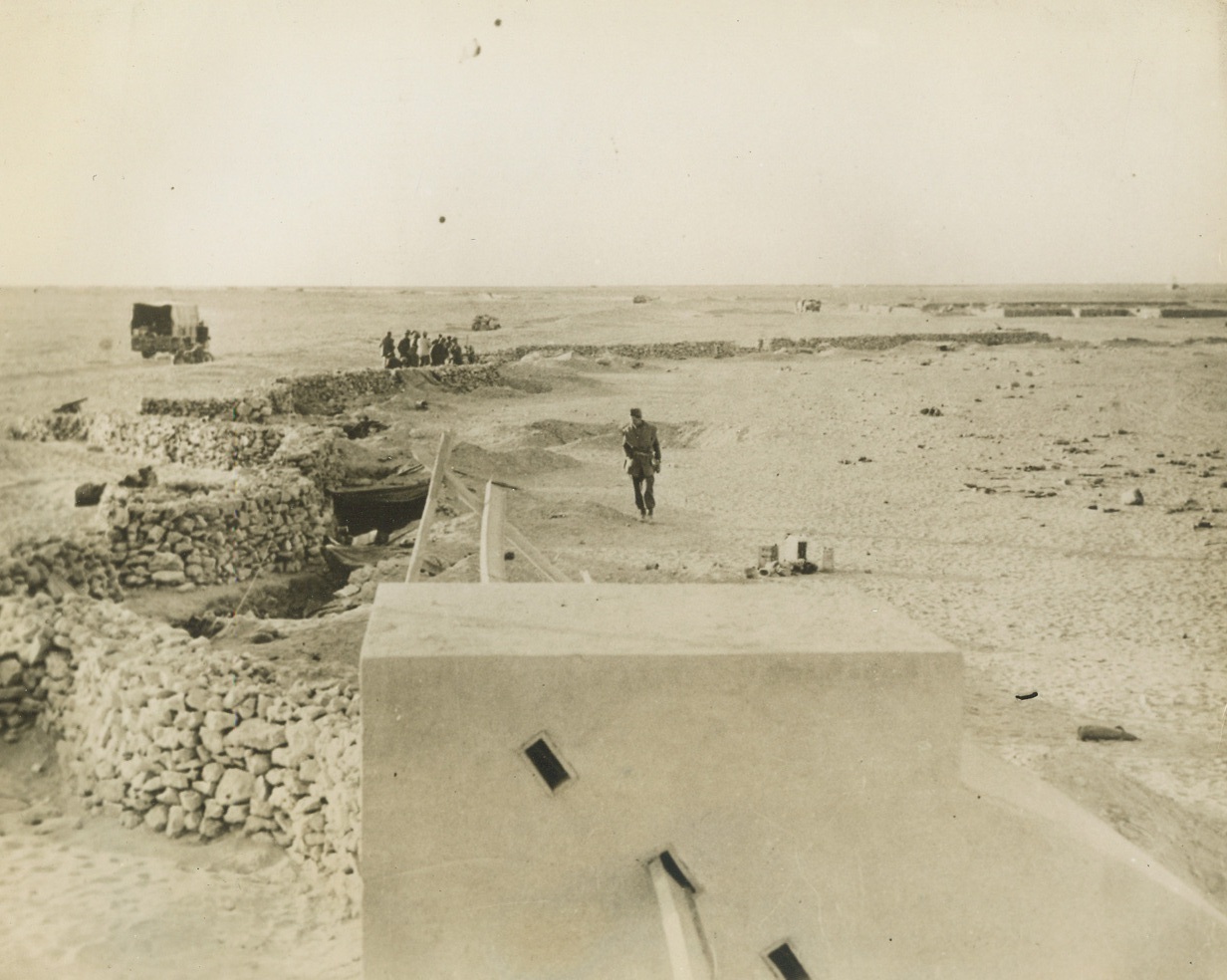
... Defense Captured By British Troops, 2/5/41 …Libya - - This general view gives some idea of the Italian defenses here, which the British troops broke through in their recent swift attack on the fortified Italian Libyan seaport. The British claim that 34,000 troops four generals and vast amounts of war materials were captured in the fall of the city. Credit line (ACME);
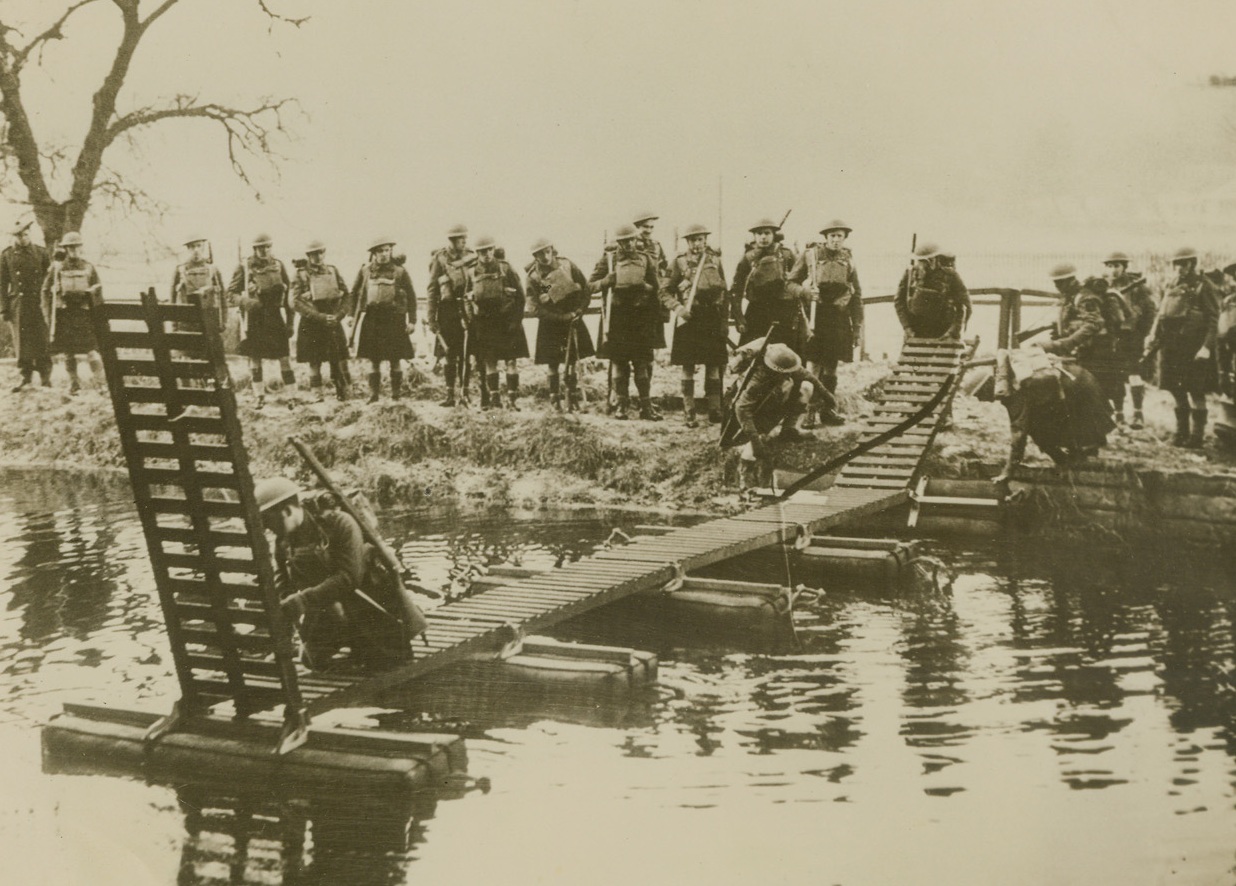
No Title, 2/5/41 Scotland—Members of a battalion of the Queen’s own Cameron Highlanders, training in the shows of their native Scotland at the Infantry Training Center, construct a Kapok bridge across a river. The Highlanders are training for the invasion, but the caption on this official British picture does not state if the training is for a defense against invaders or for an invasion by the British forces. Credit: ACME. Passed by British censor—via Clipper.;
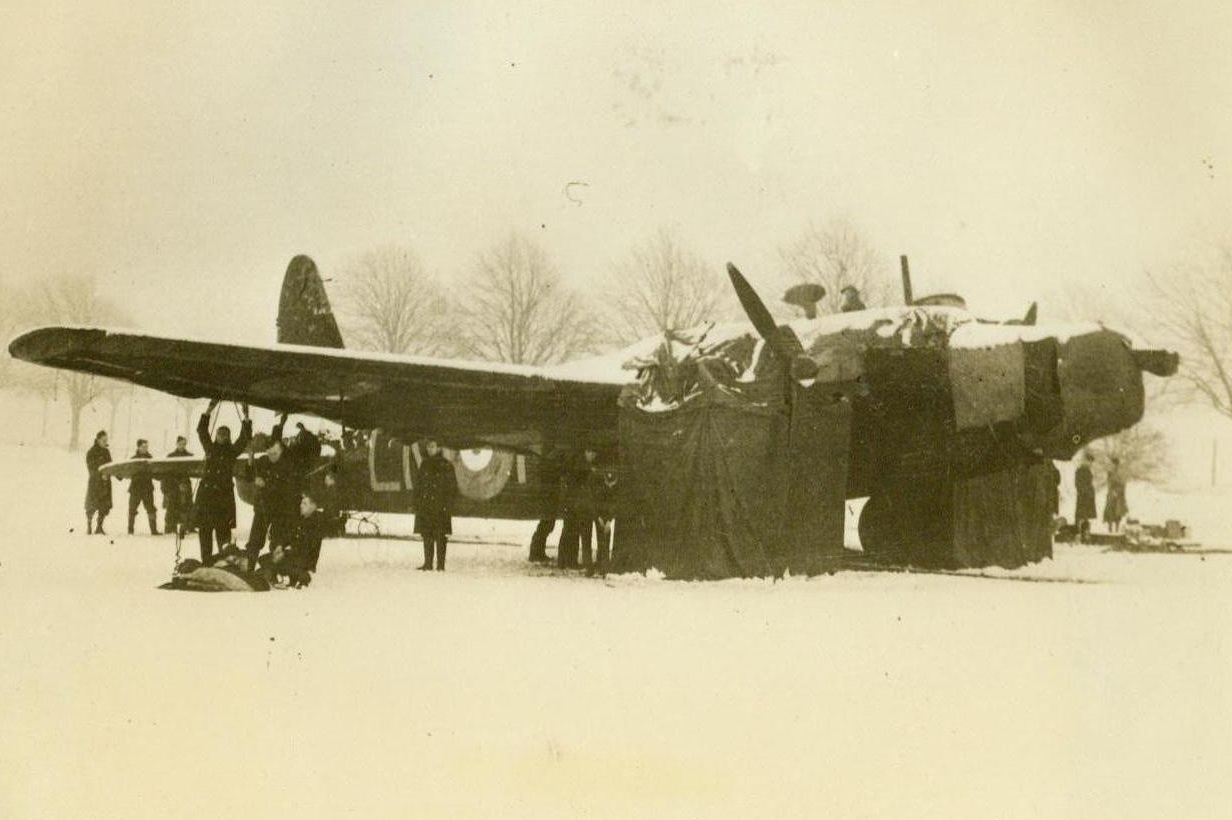
Britishers Fight Winter to Keep Bombers Ready, 2/5/41 Somewhere in England -- A ground crew works to get a British bomber ready for flight during the recent spell of snow and bitter cold which swept the country. Six aircraftsmen, headed by a corporal, are responsible for the upkeep of each of the bombers of the British Bomber Command. Passed by British censor. Credit: ACME;
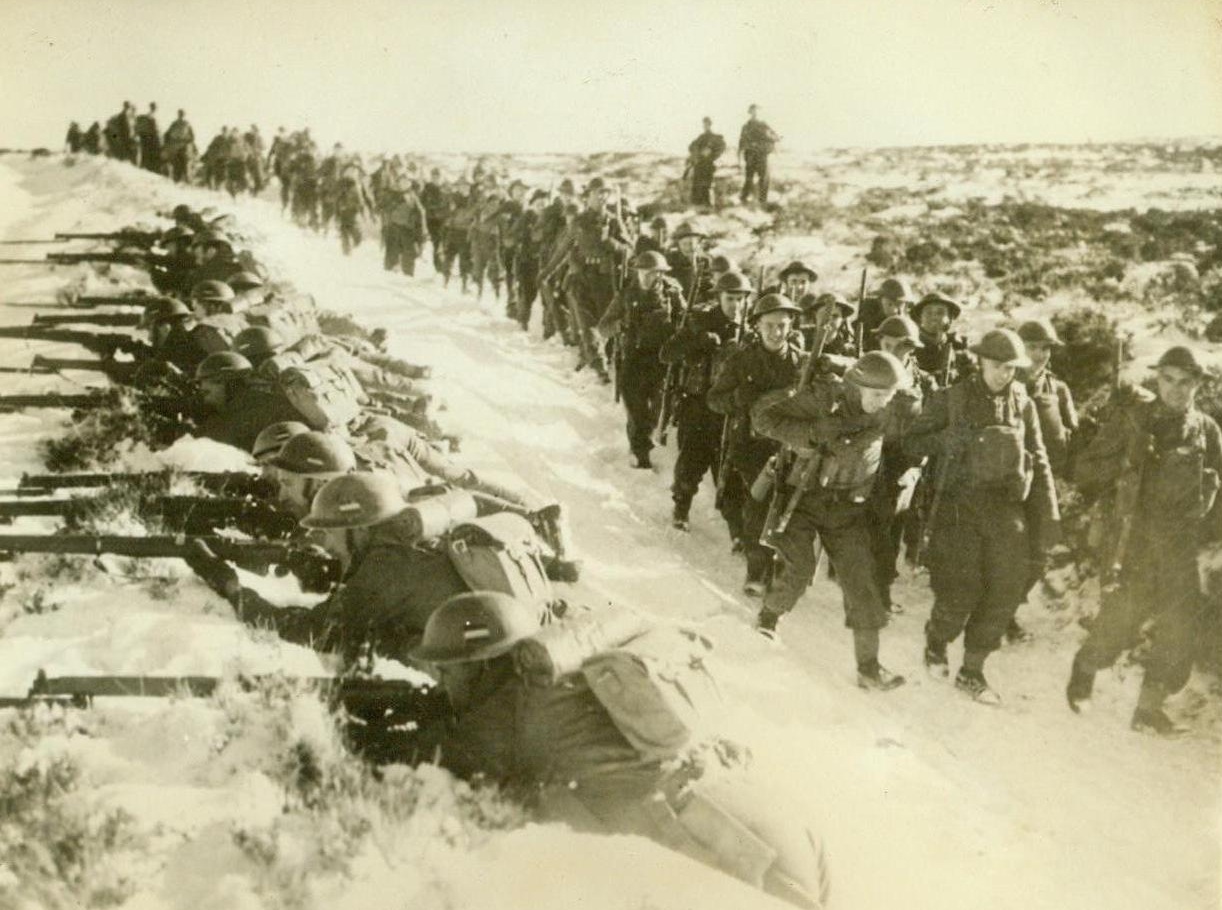
British Troop Train Under Shell Fire, 2/5/41 England -- Troops on the left man a snow-covered sunken road while their mates move into position for an advance during maneuvers in which the troops move up under a living barrage. Britain’s army today trains under real war conditions and part of that training consists of getting the men used to shell fire. Passed by British censor. Credit: ACME;
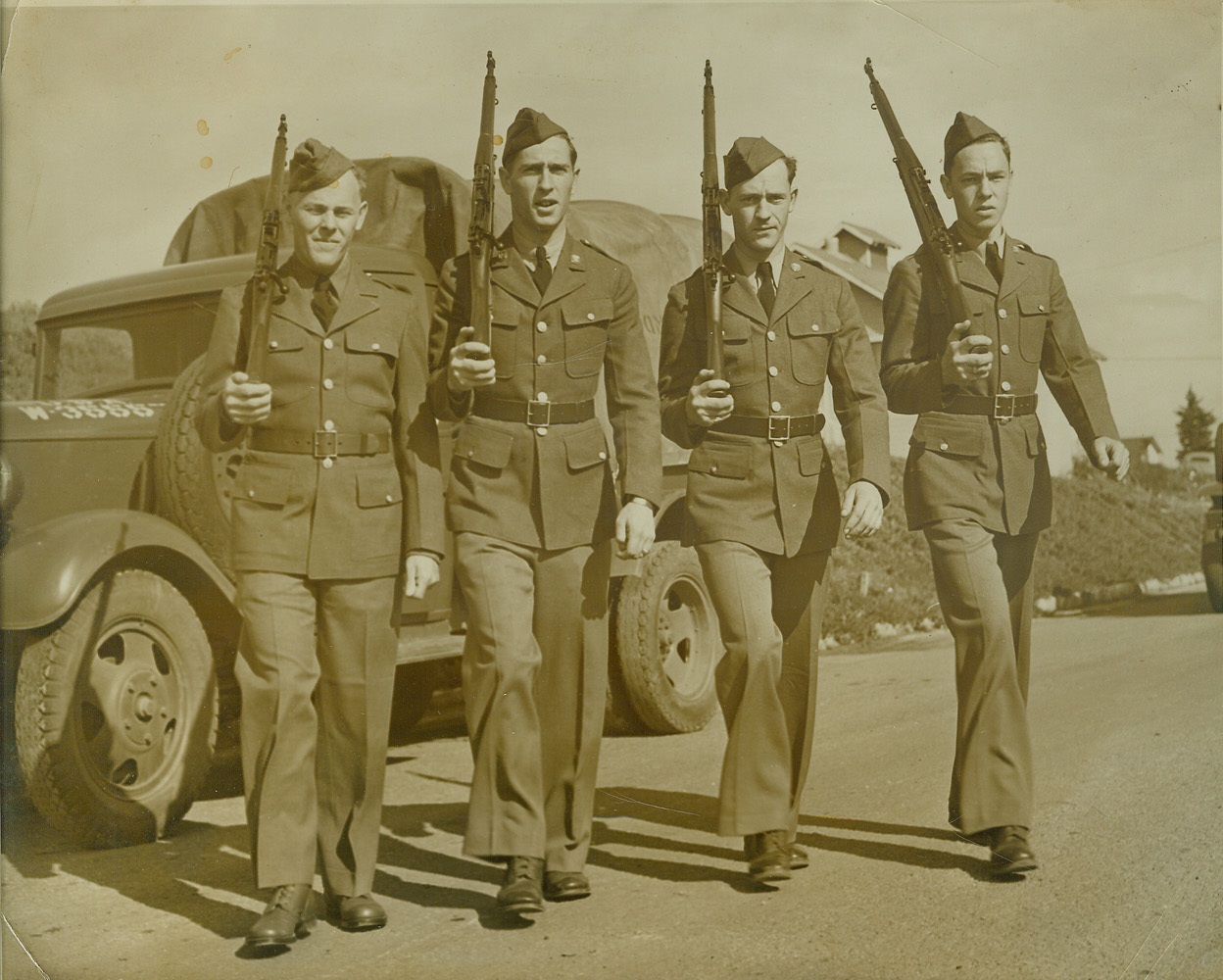
Four of a Kind, 2/6/41 FORT MAC ARTHUR, SAN PEDRO, CALIF. – We’re in the Army now and like it. Such is the talk of the four Carson brothers. Wayne, Samuel and Alfred Carson enlisted last October. The fourth just joined up, and now they plan for the fifth brother to enlist. Photo shows: (left to right) William L. 28, Wayne Q. 25, Samuel M. 20, and Alfred J. Carson, 18. The brothers are members of the 69th Quarter master Battalion at Fort MacArthur. Credit: (ACME);
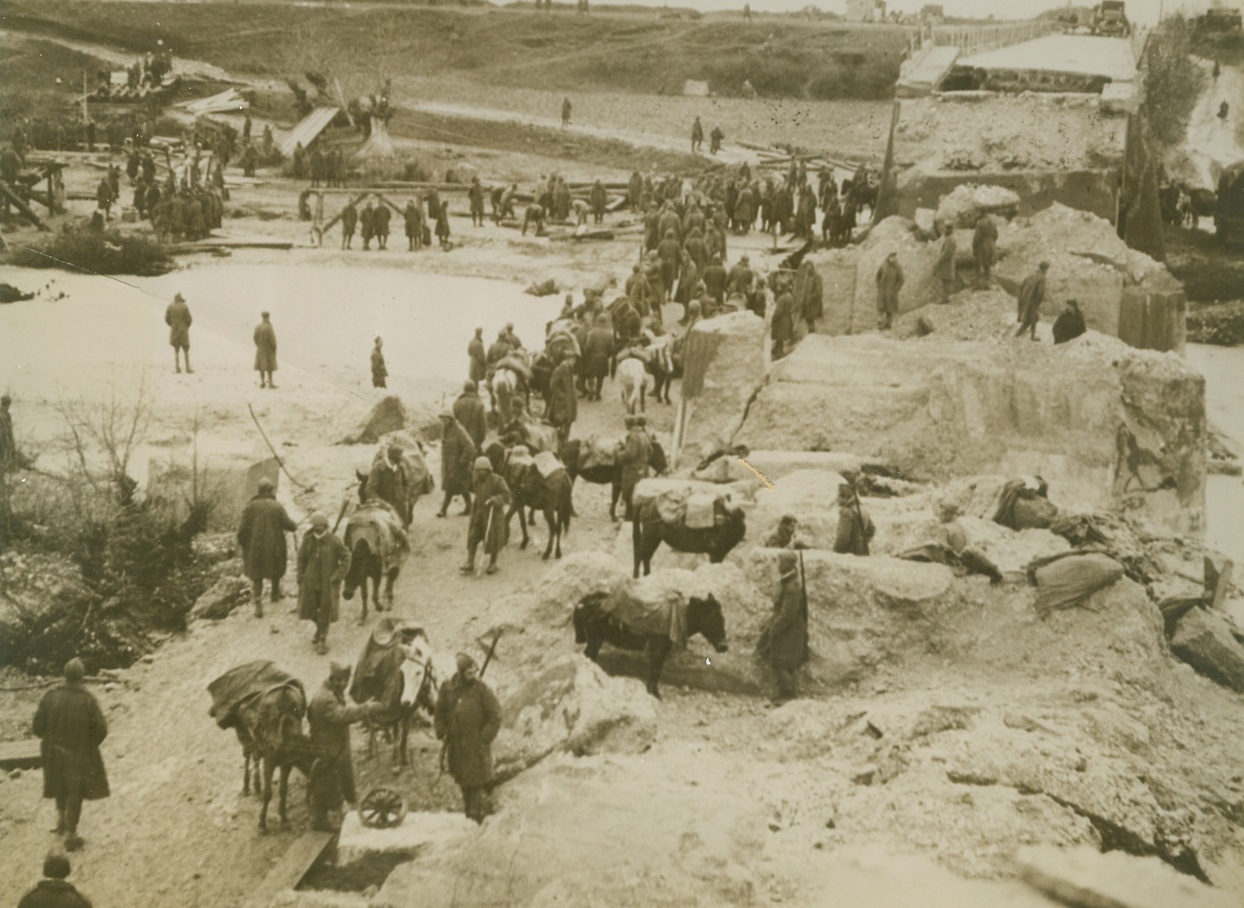
ON THE RETREAT, ITALIANS LEAVE RUIN IN ALBANIA, 2/7/41 ON THE ALBANIAN FRONT—Retreating Italians, fleeing the cold steel and dauntless courage of victorious Greek forces, dynamited this bridge near Kligura as an obstacle in the path of the victors. This is one of the first pictures to reach the United States of the war in Albania.;
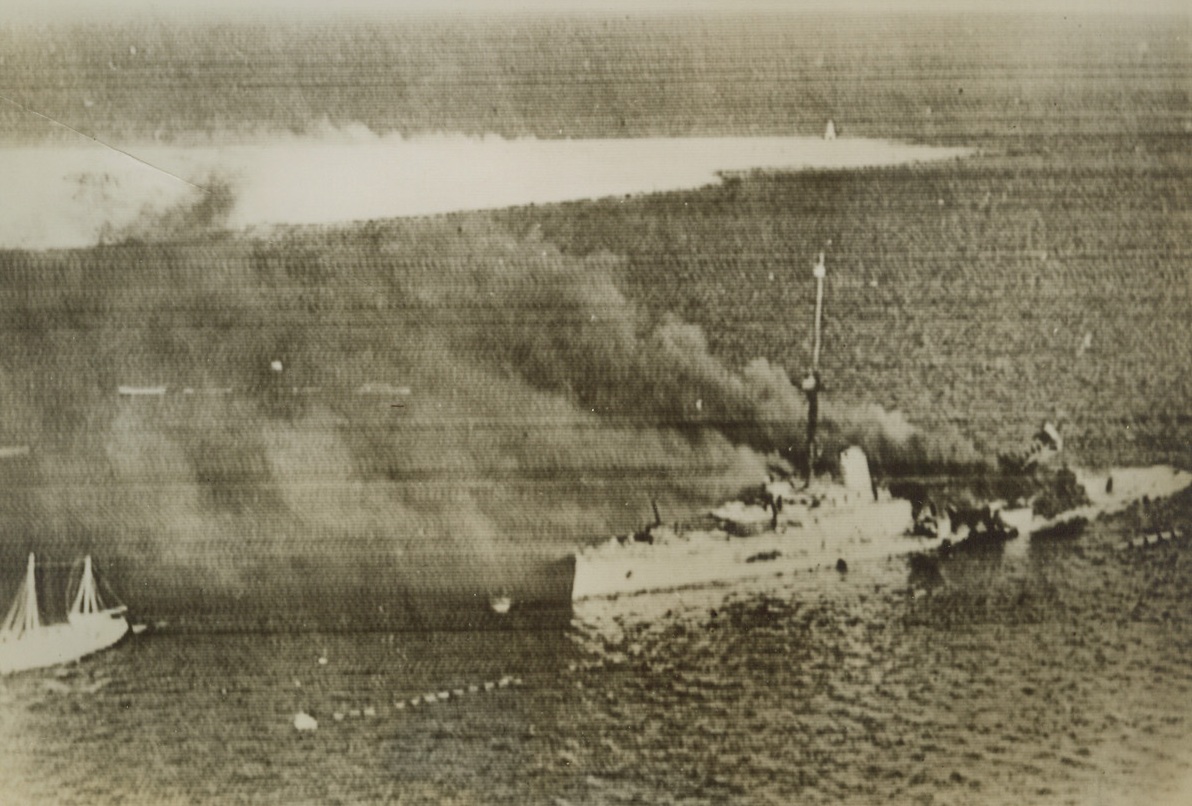
Italian Warship Burning at Fall of Tobruk, 2/7/41 TOBRUK—The Italian cruiser San Giorgio ablaze in Tobruk Harbor as the Italian stronghold fell to the combined British land, sea and aerial forces. Photo cabled from London to New York. Credit: ACME CABLEPHOTO.;
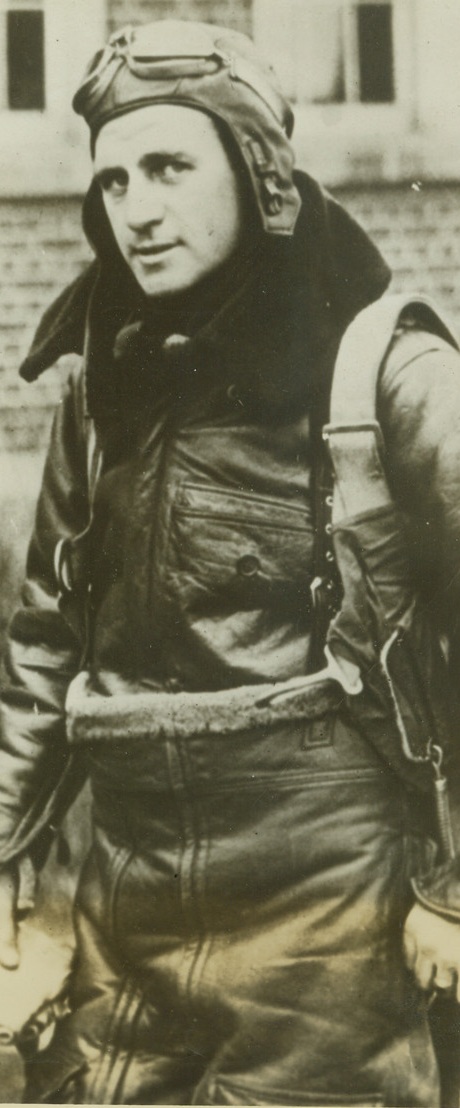
Eight Killed in Army Bomb Plane Crash, 2/7/41 LOVELOCK, NEV. - Capt. Richard S. Freeman of ...,Ind., commandant of Ladd Field, Fairbanks, Alaska, pilot of the Army bombing plane that crashed on Ragged Top Mountain, near Lovelock, Nev., killing him and crew of seven. The plane was en route from Sacremento, Calif., to Denver, Colo., for training in cold weather work.;
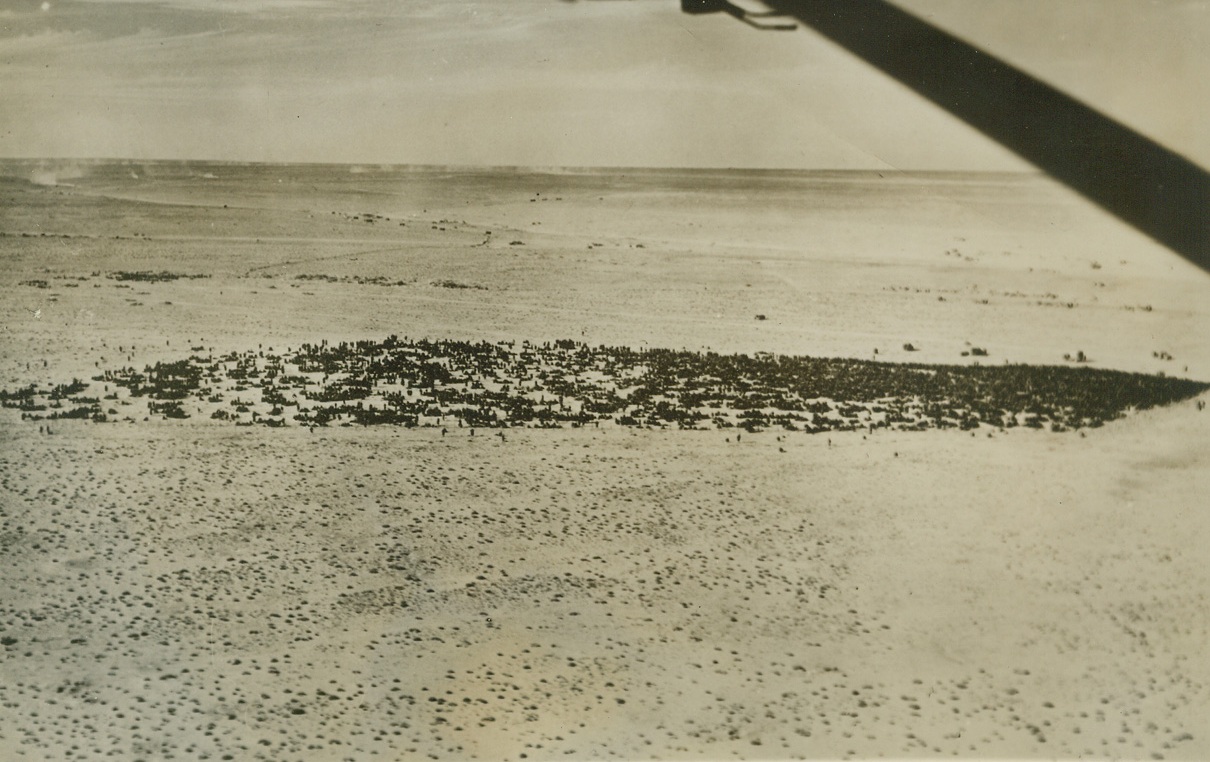
Mass Collection of Italian Prisoners, 2/8/41 BARDIA – This picture taken at Bardia by an Air Ministry official photographer, shows prisoners, prisoners, and more prisoners. This huge mass collected near the town of Bardia wait shipment to a camp.Credit: (ACME);
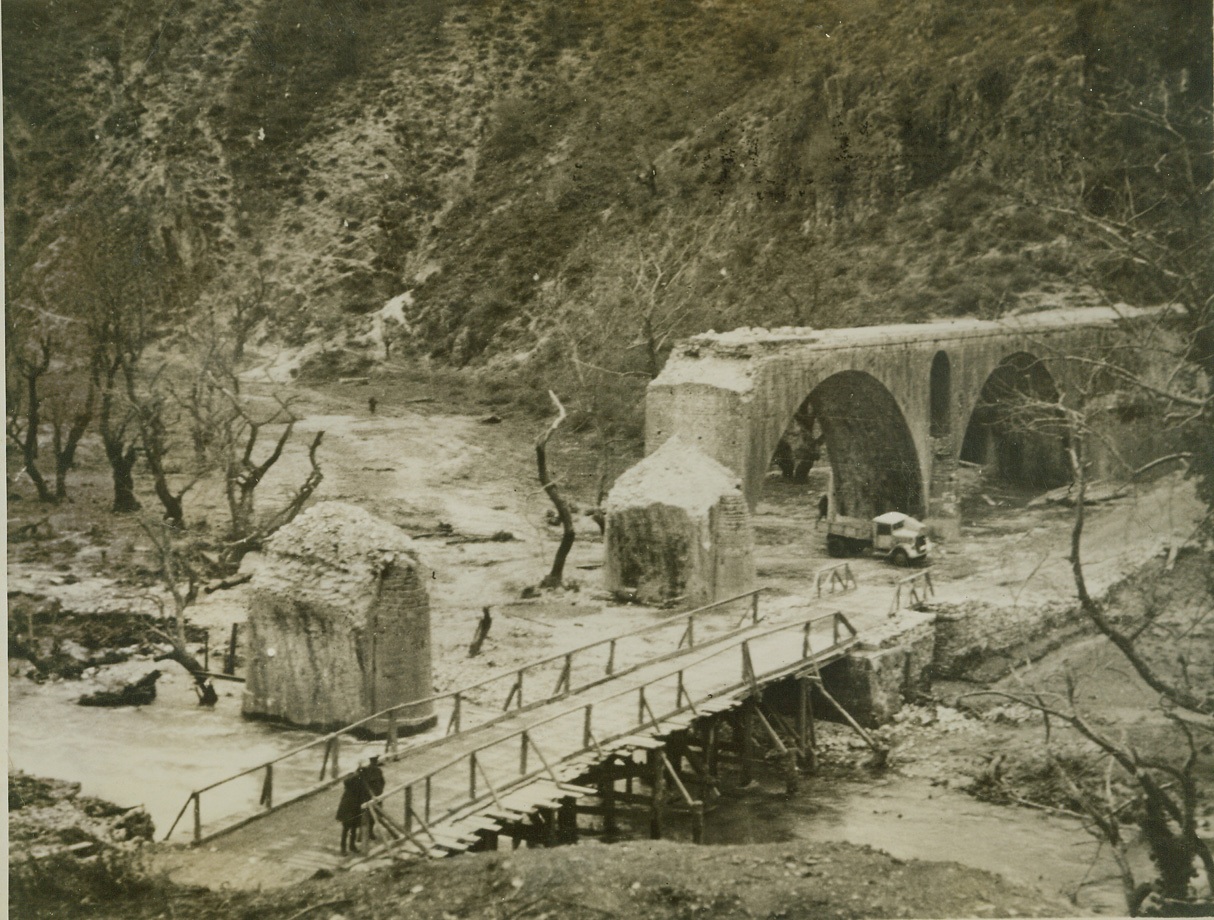
TO SLOW UP THE ENEMY, 2/13/41 This is all that remains of a stone bridge that was once a sturdy highway across the Albanian River. Italian troops, retreating before a Greek advance, blew up the structure. Credit: ACME;
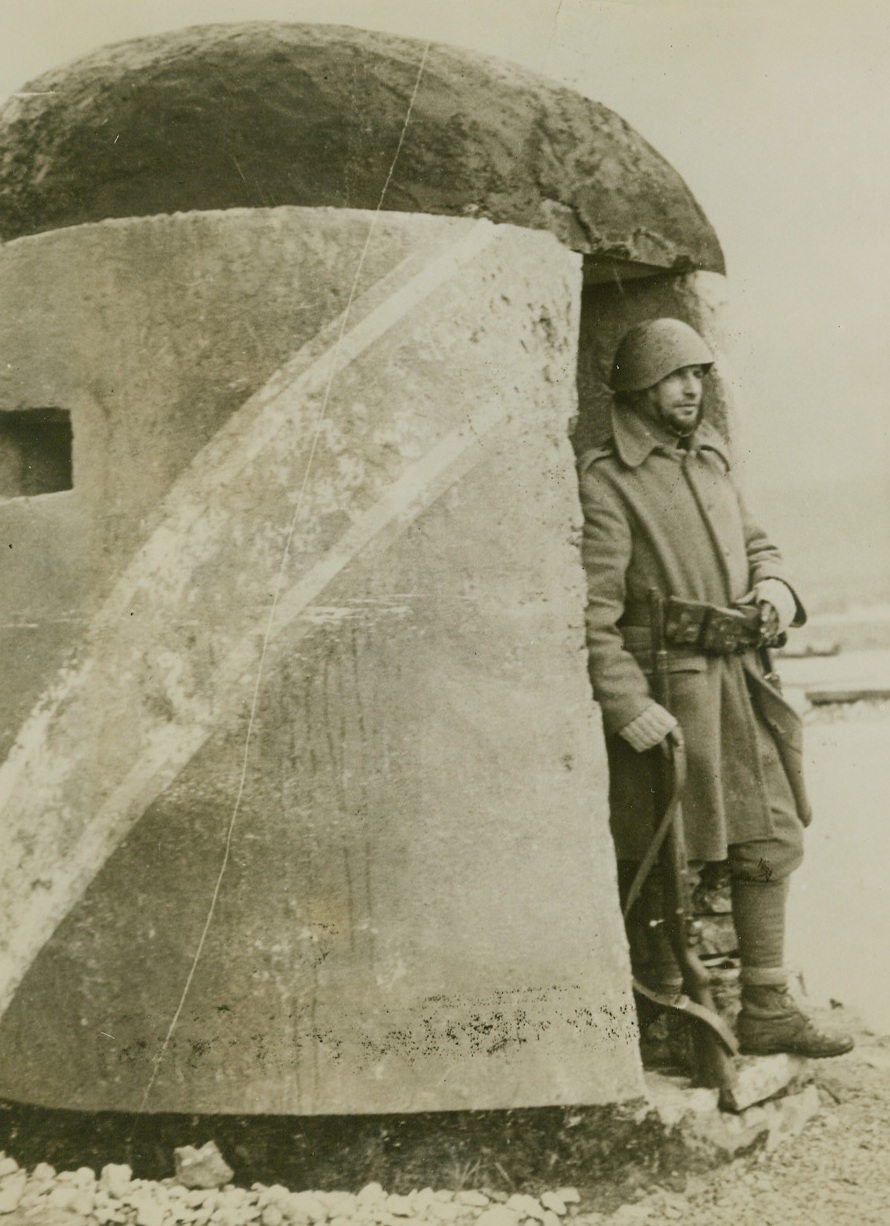
GUARDING A CAPTURED PILLBOX, 2/13/41 A Greek soldier somewhere in Albania stands guard at the door of captured pillbox that a short time ago sheltered Italian gunners. Credit: Acme;
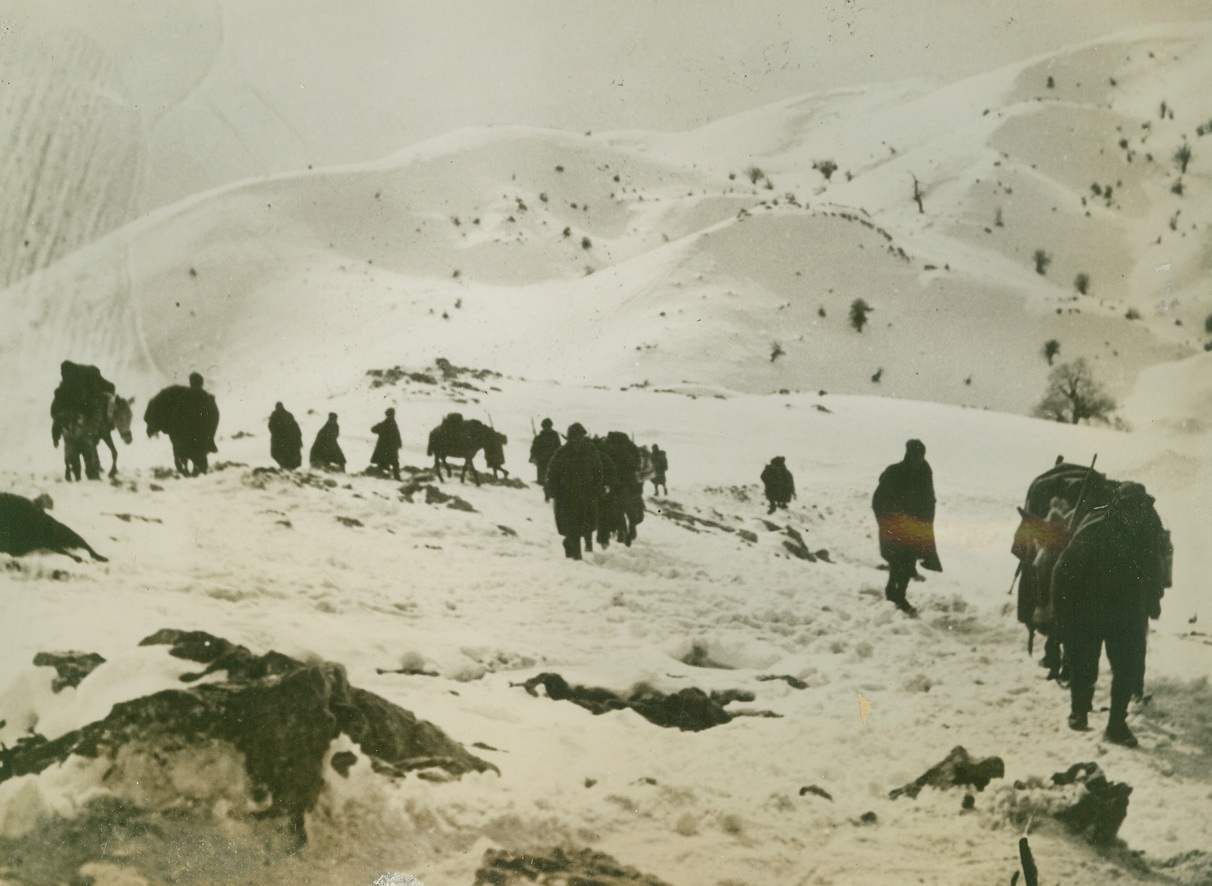
MOVING UP IN ALBANIA, 2/13/41 Greek troops, aided by pack mules, advance over the snow covered mountains of Albania toward the front lines. Credit: Acme;
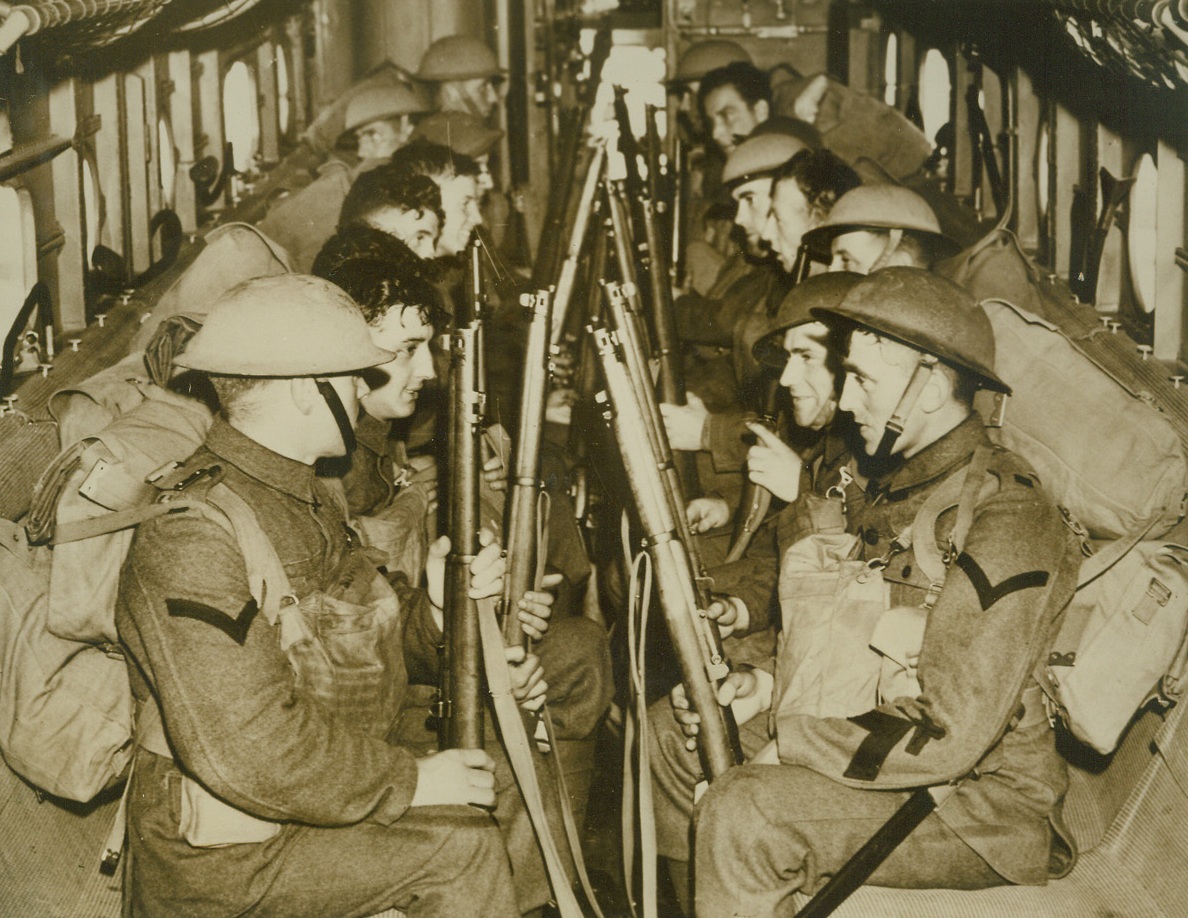
PRACTICING FOR THE ITALIAN INVASION, 2/14/41 ROME—According to the Italian High Command, British parachute troops armed with machine guns, hand grenades and dynamite to flow up communications in lower Italy, landed in the Lucania and Calabria provinces on the night of Feb. 10-11. The report stated the men were captured before they could cause any serious damage. In the above photo British troops are shown being transported by air in large numbers for the first time in Army practice maneuvers held recently in England.Credit: Acme;
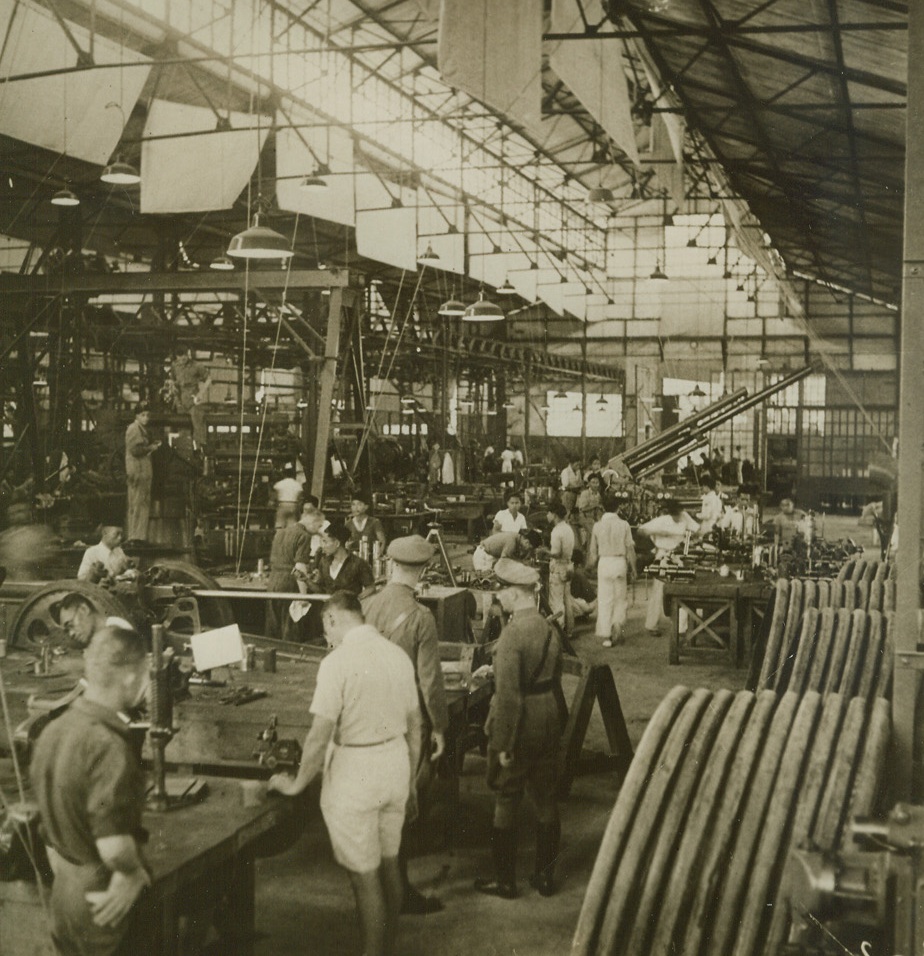
Turning Out Guns for the East Indian Army, 2/17/41 Bandoeng, Java – This Army ordnance shop in Bandoeng, Java, is busily turning out coast artillery pieces and range finding instruments in the Netherlands Indies great rearmament program. In the background is a standard Army 8 centimeter anti-aircraft gun. The Dutch colonial government is determined that the Netherlands Indies shall not fall prey to unpreparedness and is building up its Armed Forces with the utmost speed.Credit Line (ACME);
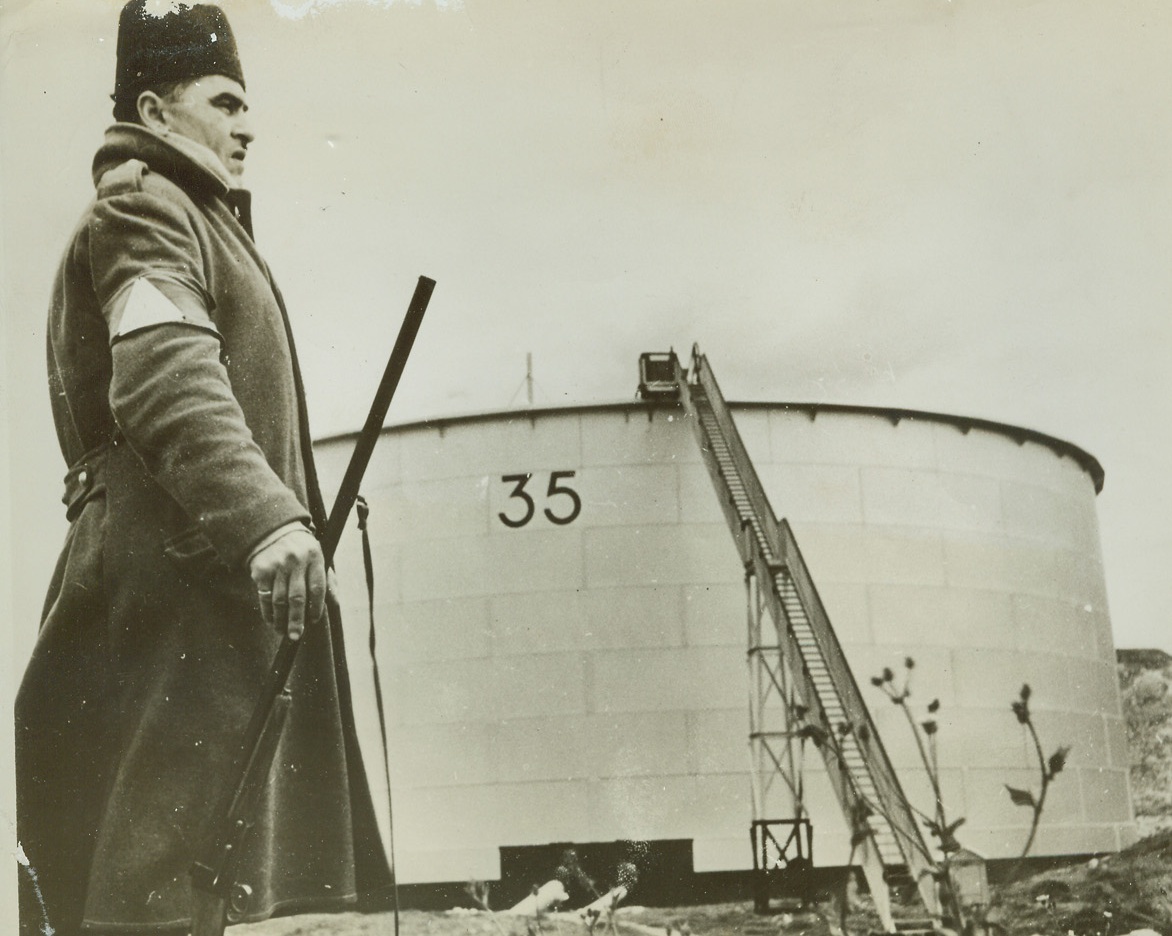
Near East Oil Fields Rumored German Coal, 3/7/41 Ankara, Turkey—Travelers from Bucharest arrived here March 7 report that Germany army officers in Rumania are talking openly of the “coming invasion” of the Iraq and Mosul oilfields which supply the vital fuel for the British army in the Near East. The attack, they say, may come through Turkey, or Russia, or across the Black Sea. The ancient land of Iraq has some of the most productive oil fields in the world. They are well-guarded by both Iraq and British forces. Above, an Iraq Petroleum Company watchman, wearing uniform and official arm badge, stands guard at oil tanks to prevent sabotage. (Foto from file) Credit: ACME.;
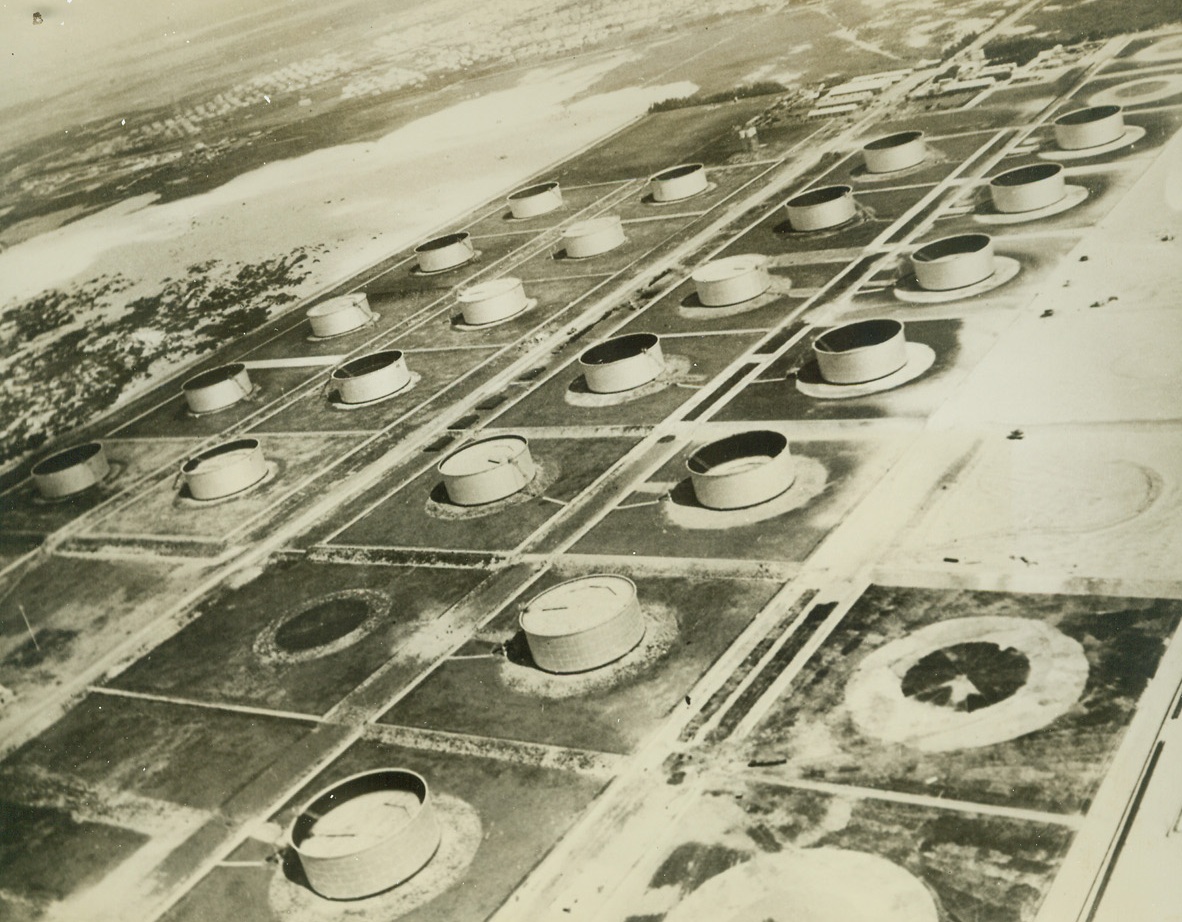
These May Be German Luftwaffe Targets, 3/7/41 Ankara, Turkey—Travelers from Bucharest arriving here March 7 report that German army officers in Rumania are talking openly of the “coming invasion” of the Iraq and Mosul oilfields which supply the vital fuel to the British army in the Near East. The Iraq pipeline, winding for more than 600 miles across hills, rivers, plains and desert to Haifa, Palestinian port on the Mediterranean, is one of the British’s main oil arteries. This cluster of oil storage tanks is in Haifa, at the end of the line. They offer conspicuous targets from the air for German bombers. (Foto from file) Credit: ACME.;
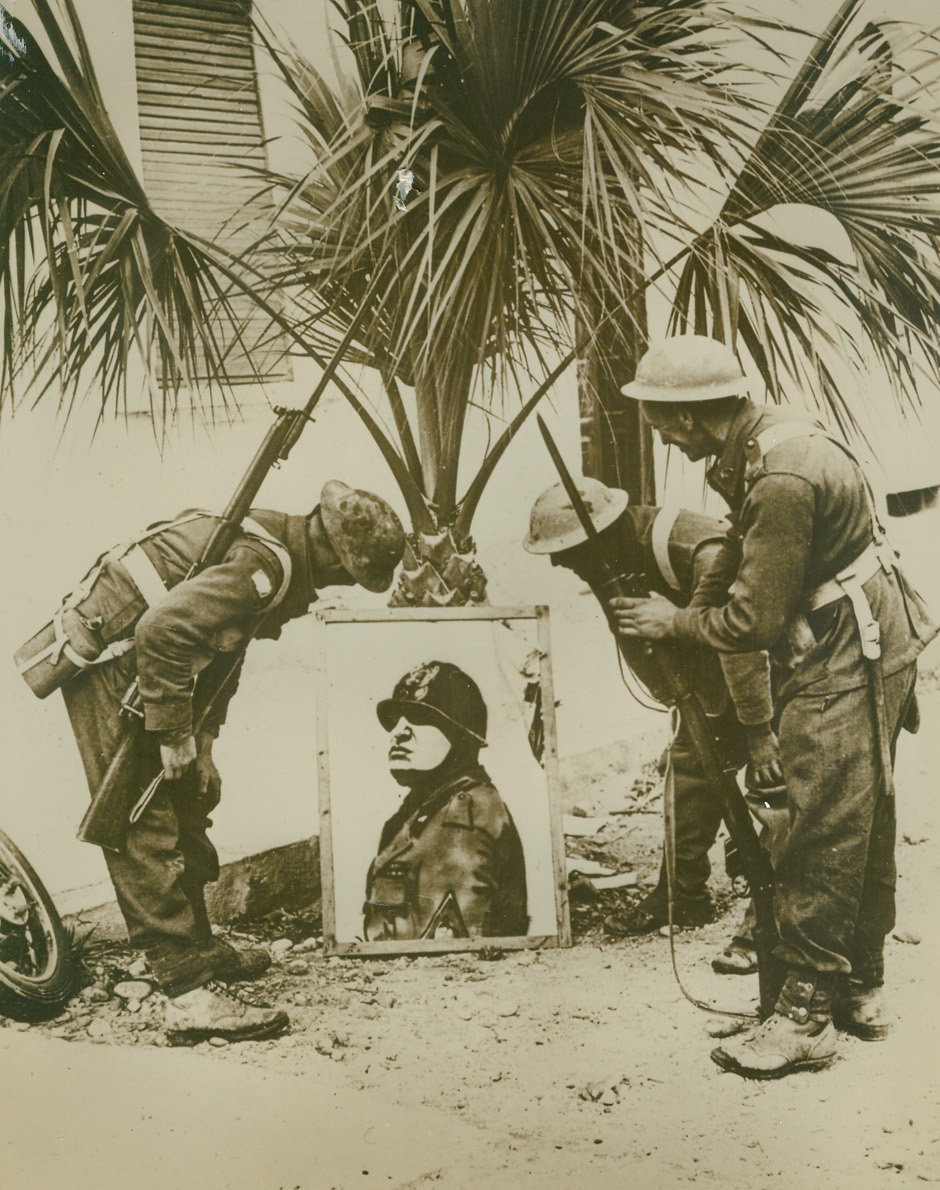
GETTING THE LAST LAUGH, 3/11/41 DERNA—These British infantrymen who participated in the capture of Derna counted this portrait of Mussolini among their prizes of war. The Tommies are getting quite a laugh from the “bull-dog” expression.;
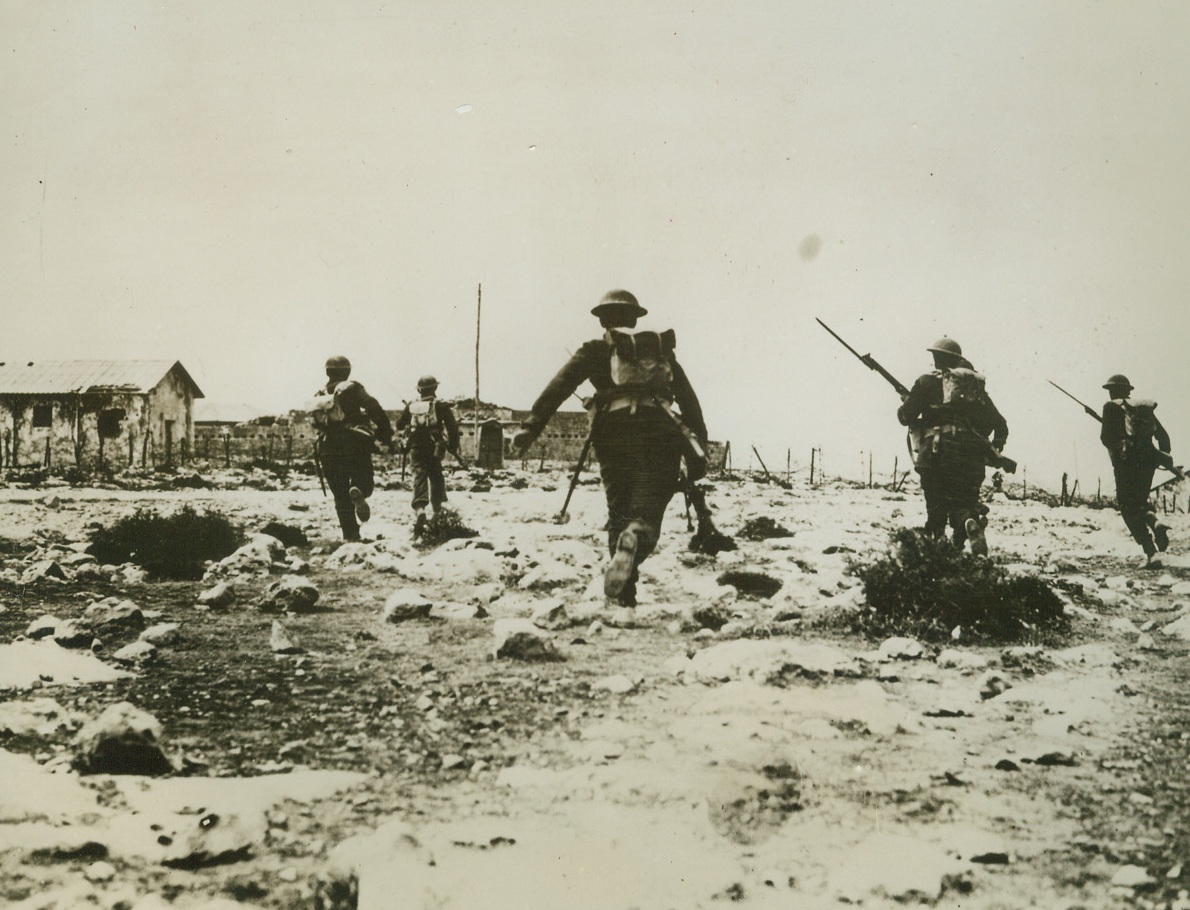
CROSSING VITAL GROUND, 3/11/41 DERNA—British infantry attack a fort at one of the key positions of Derna. Infantrymen are shown crossing the vital ground just outside the fort, on their way to capture it. Credit Line (ACME);
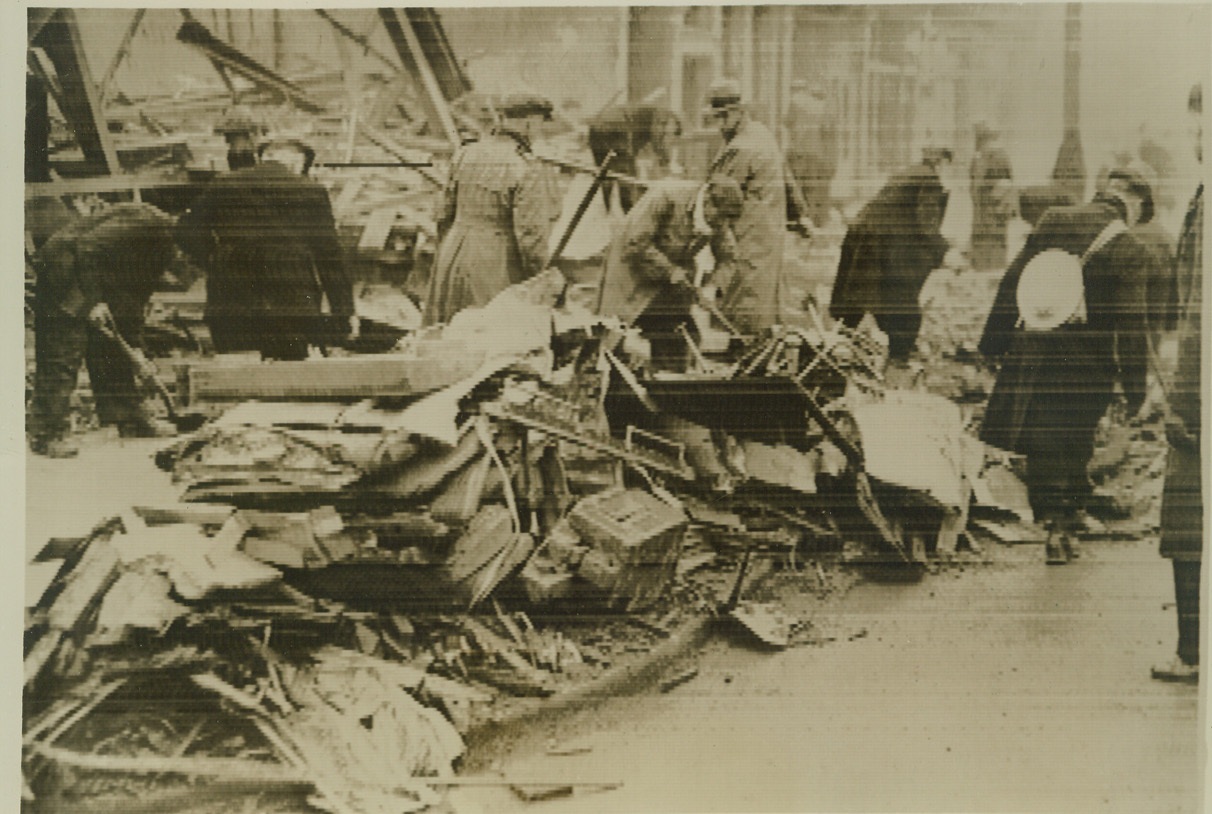
Many Killed as Bomb Strikes London Bus, 3/16/41 LONDON, ENGLAND -- Rescue workers frantically search the ruins of a bus struck by a German bomb during the early morning air raid of Mar. 16th for the bodies of passengers killed. "A considerable number" of persons perished when the bomb struck, according to the British censor-passed caption. This picture was flashed to New York from London by cable. Credit: (ACME cablephoto);
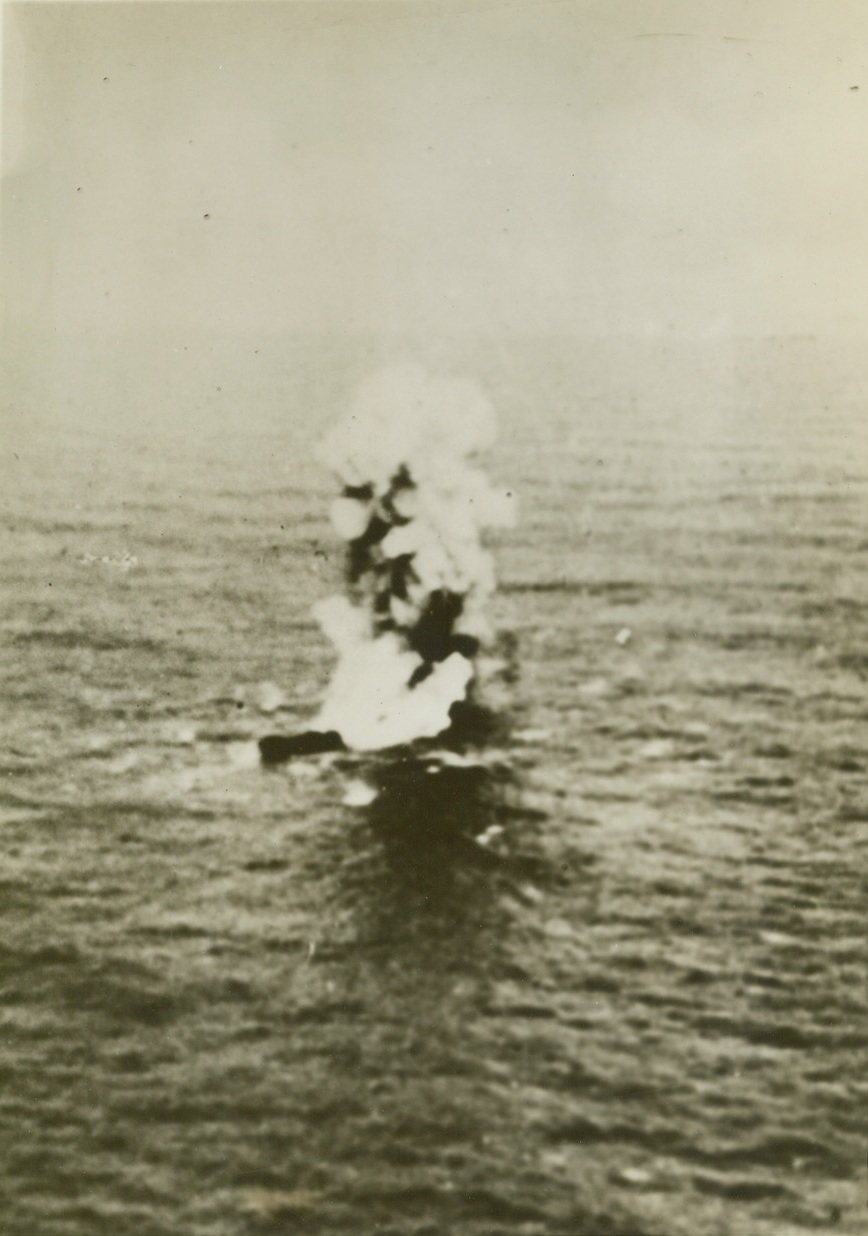
HOW GERMANY WARS ON BRITISH SHIPPING FROM AIR, 3/16/41 GERMANY – A huge volume of smoke and flame pour from the stricken British freighter as she explodes before sinking after being struck by explosive and incendiary bombs dropped on her by a long-range German bomber, according to the German censor-passed caption on this, one of a series of dramatic pictures of how German bombers prey on British shipping. Credit: ACME;
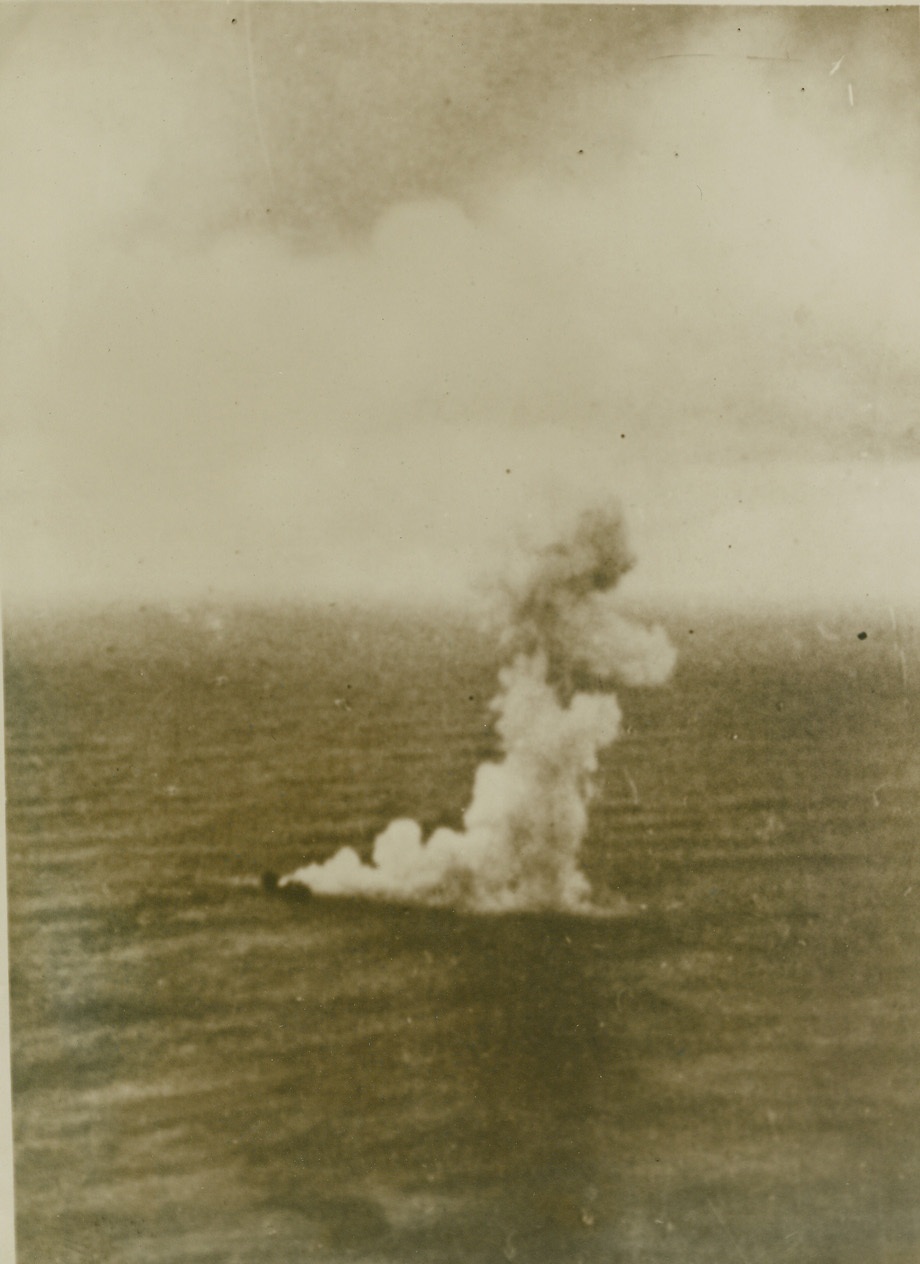
HOW GERMANY WARS ON BRITISH SHIPPING FROM AIR, 3/16/41 GERMANY – The stricken British freighter settles beneath the waves, a cloud of smoke marking her resting place, according to the German censor-passed caption on this picture of how long-range German bombers are striking at Britain’s shipping lifeline. Credit: ACME;
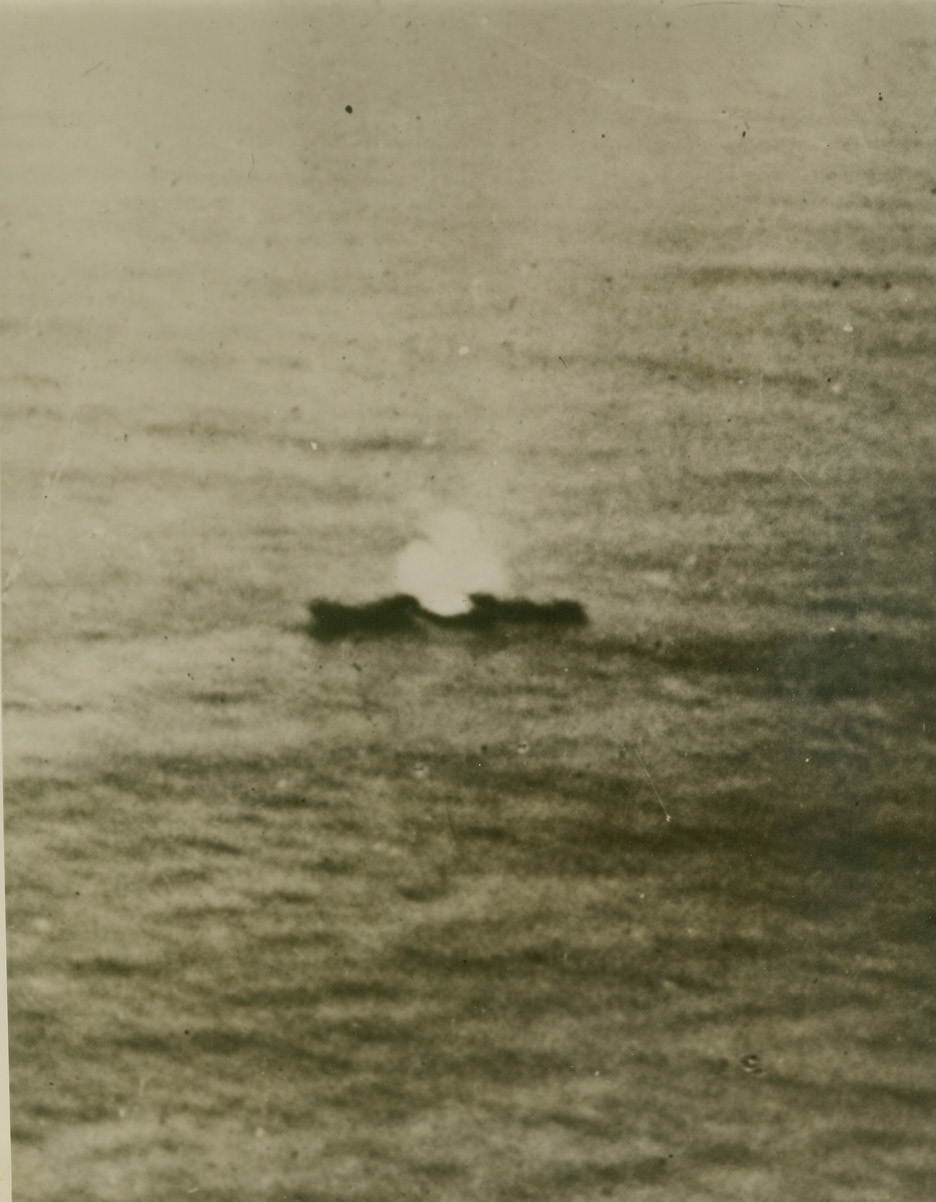
HOW GERMANY WARS ON BRITISH SHIPPING FROM AIR, 3/16/41 GERMANY – In this graphic series of pictures released by the German censor and just received in the United States by clipper, is shown how Germany is striking telling blows upon the British shipping lifeline with its long-range bombers. According to the German censor, represented is a bombed British freighter sinking low in the water as the effects of explosive and incendiary bombs cause it to head toward the bottom of the ocean. Credit: ACME;
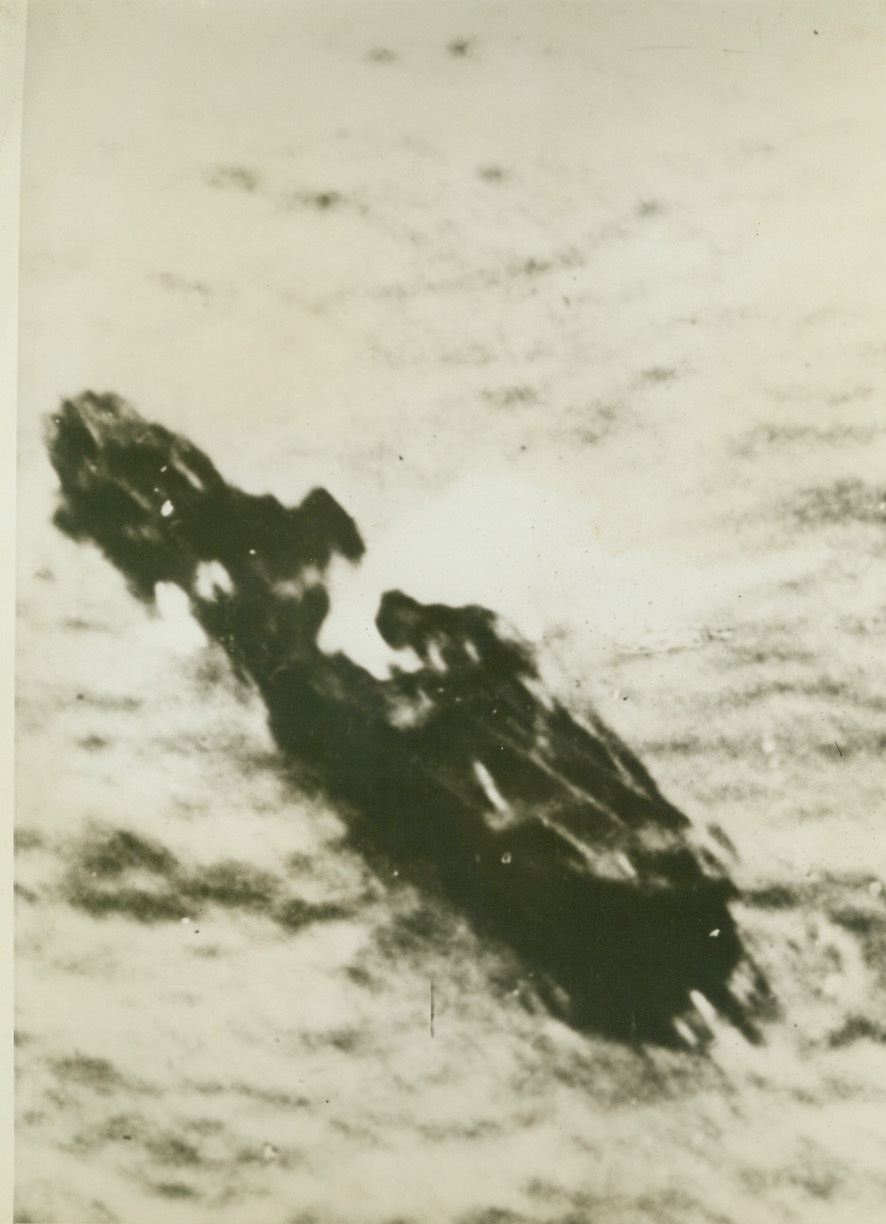
HOW GERMANY WARS ON BRITISH SHIPPING FROM AIR, 3/16/41 GERMANY – The manner in which Germany is striking telling blows at Great Britain’s shipping lifeline is illustrated in a graphic manner in this series of pictures, released by the German censor, of how a long-range German bomber, ranging far at sea to deliver the attack, sinks a British freighter. Here, almost directly over the stricken vessel, the pilot sees the rapidly spreading flames roar through the ship. Credit: ACME;
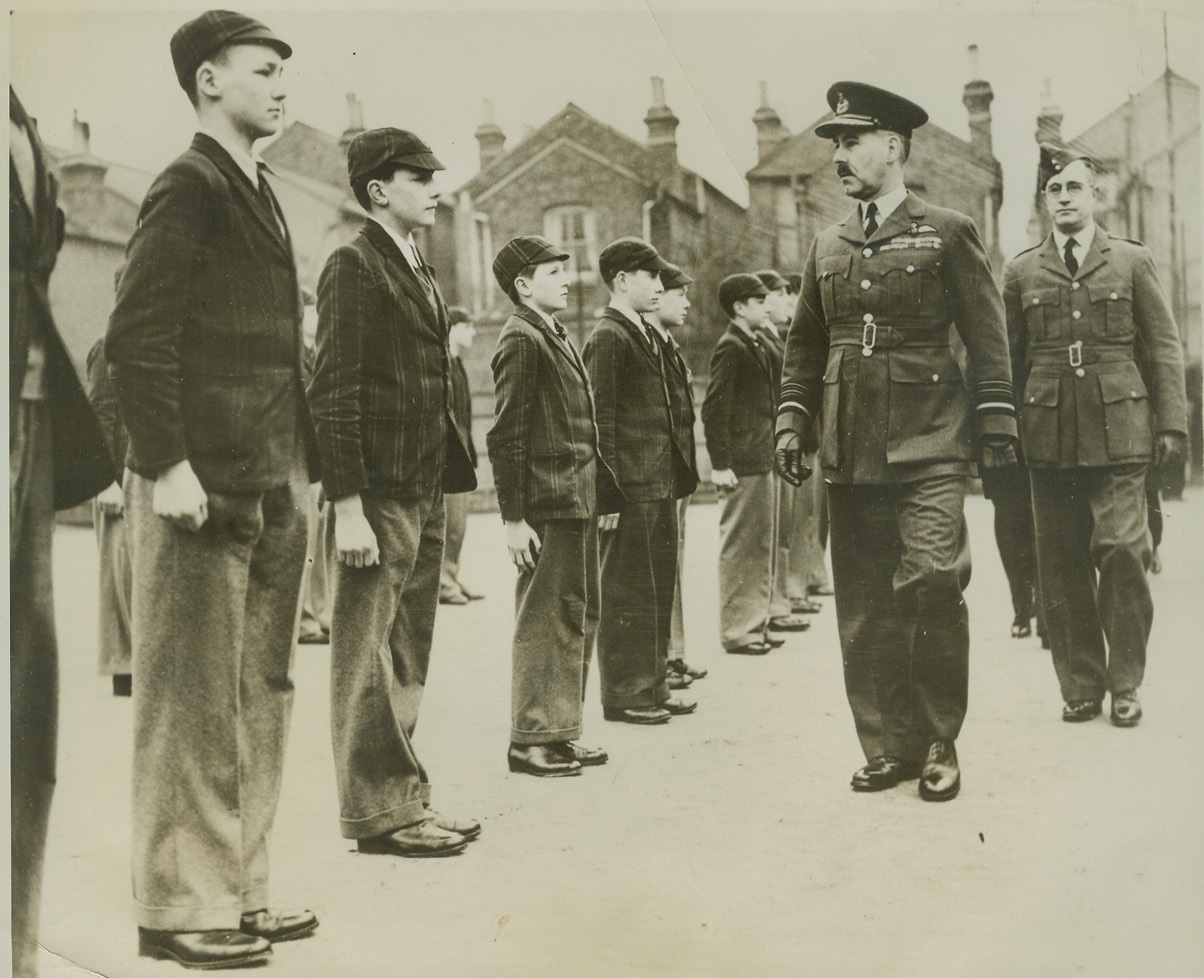
AIR MARSHAL INSPECTS FLIERS OF THE FUTURE, 3/18/41 ENGLAND – Air Marshal A. G. R. Garrod, Air Member for Training, inspects the Tiffin Boys’ School Unit of the Air Training Corps during a recent tour of inspection. The boys, still in their school clothes, stand stiffly at attention. These youngsters are learning the rudiments of flying and may some day, should the war last long enough, take their places in the first line of Britain’s aerial defense. (Passed by British censor). Credit: ACME;
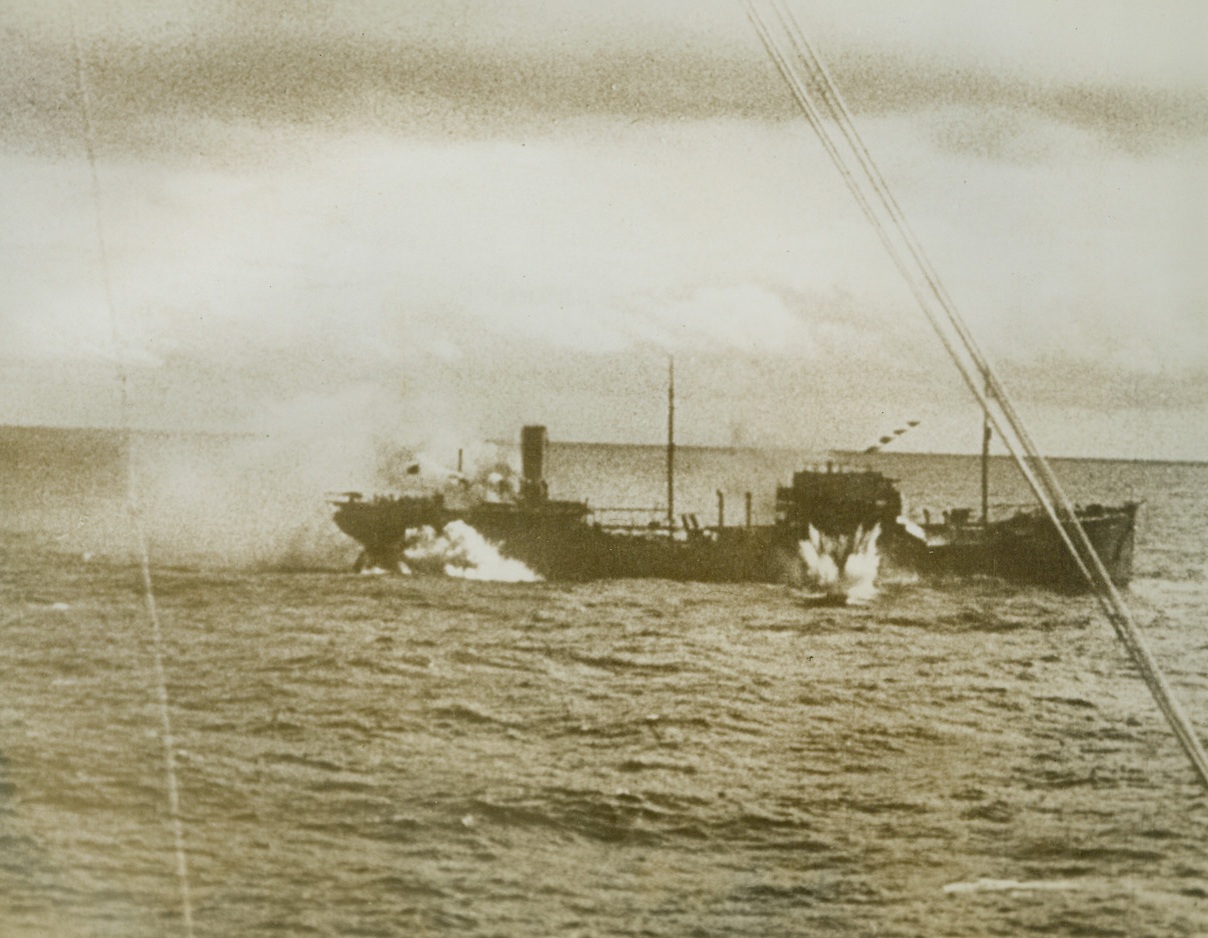
British Tanker Hit by German Warship, 5/6/41 A British tanker on the receiving end of a broadside from a German battleship somewhere in the Atlantic. According to the German caption which accompanied the photo, the tanker attempted to run away after the German warship radioed orders for her to stand by. Several sailors were injured when the Germans sank the tanker. Credit Line (ACME);





 Trash & Recycling
Trash & Recycling
 Online Payments
Online Payments
 City Documents
City Documents
 Parks
Parks
 Traffic Court
Traffic Court
 CITY PARKS
CITY PARKS
 Outdoor Recreation
Outdoor Recreation
 Volunteer
Volunteer
 Home
Home TRANSLATE
TRANSLATE
